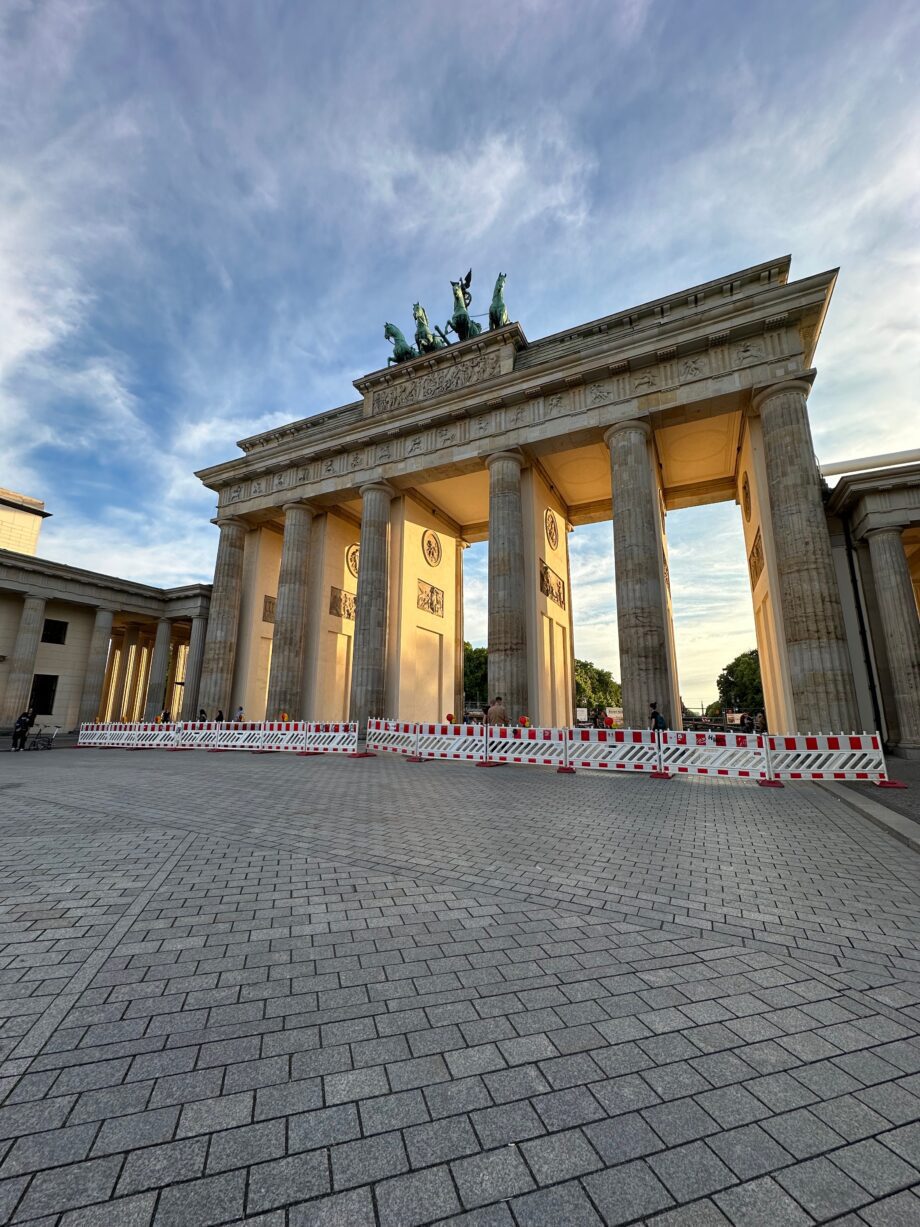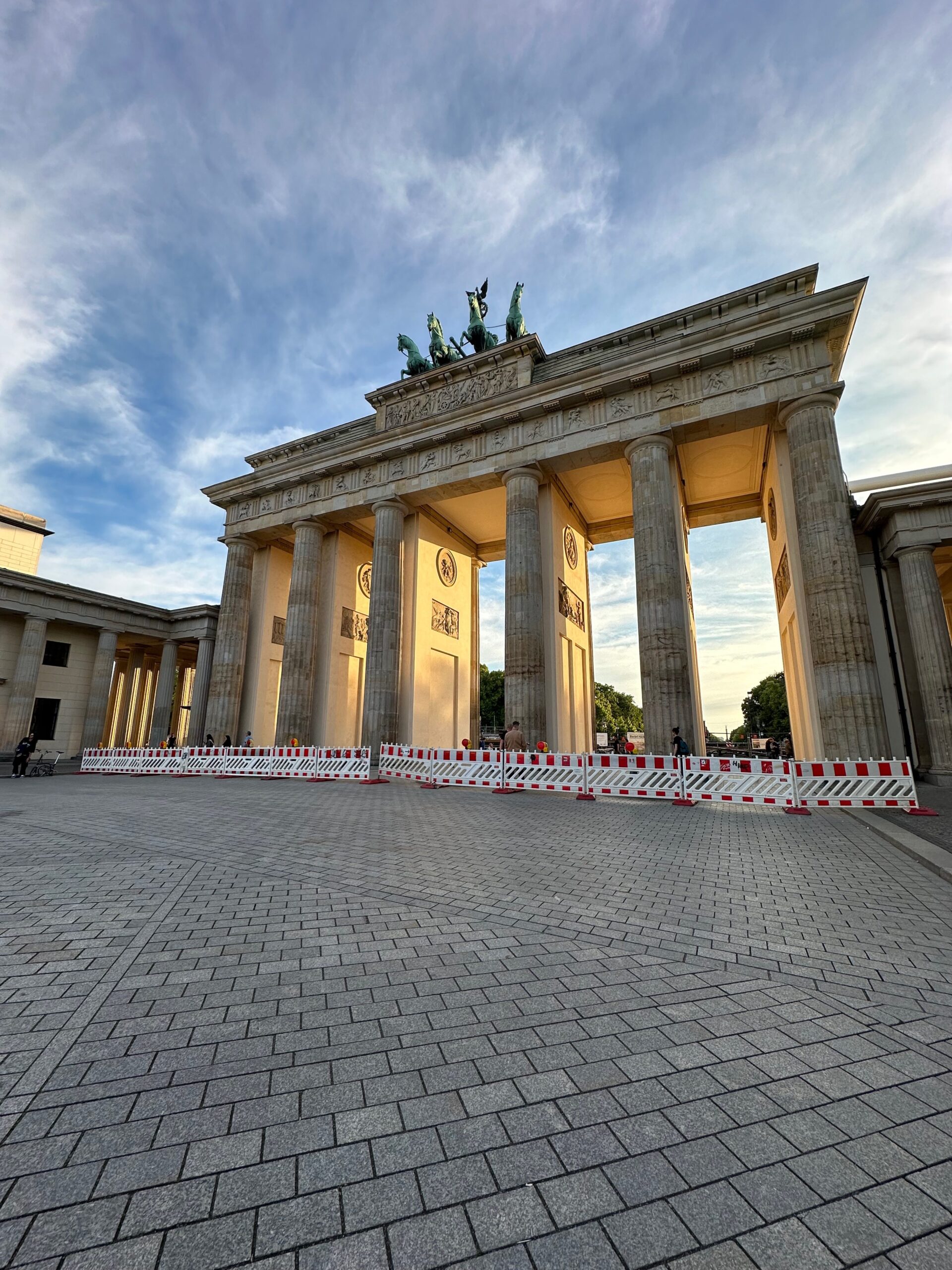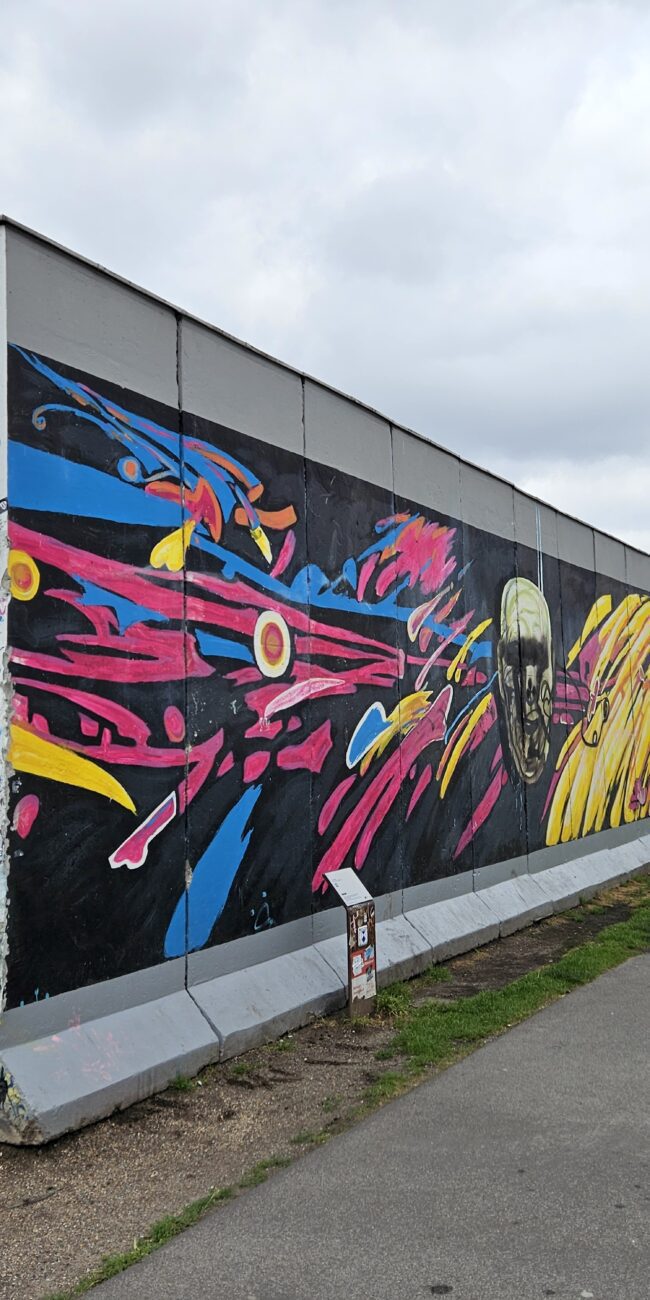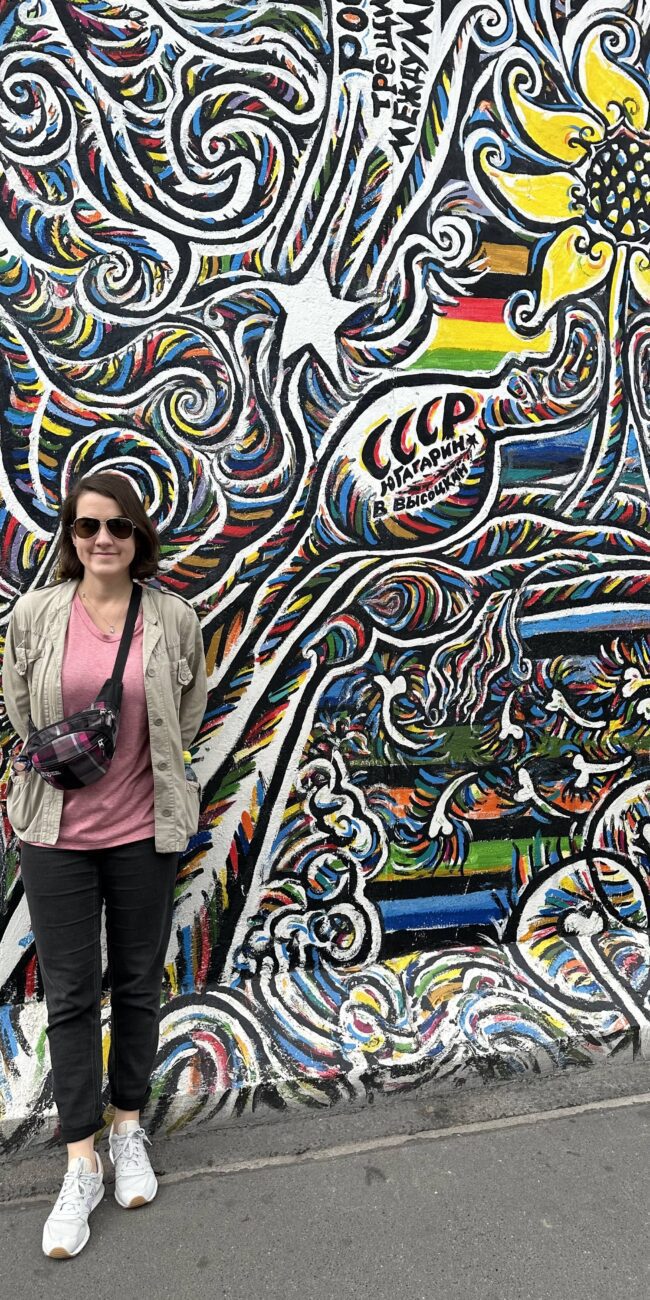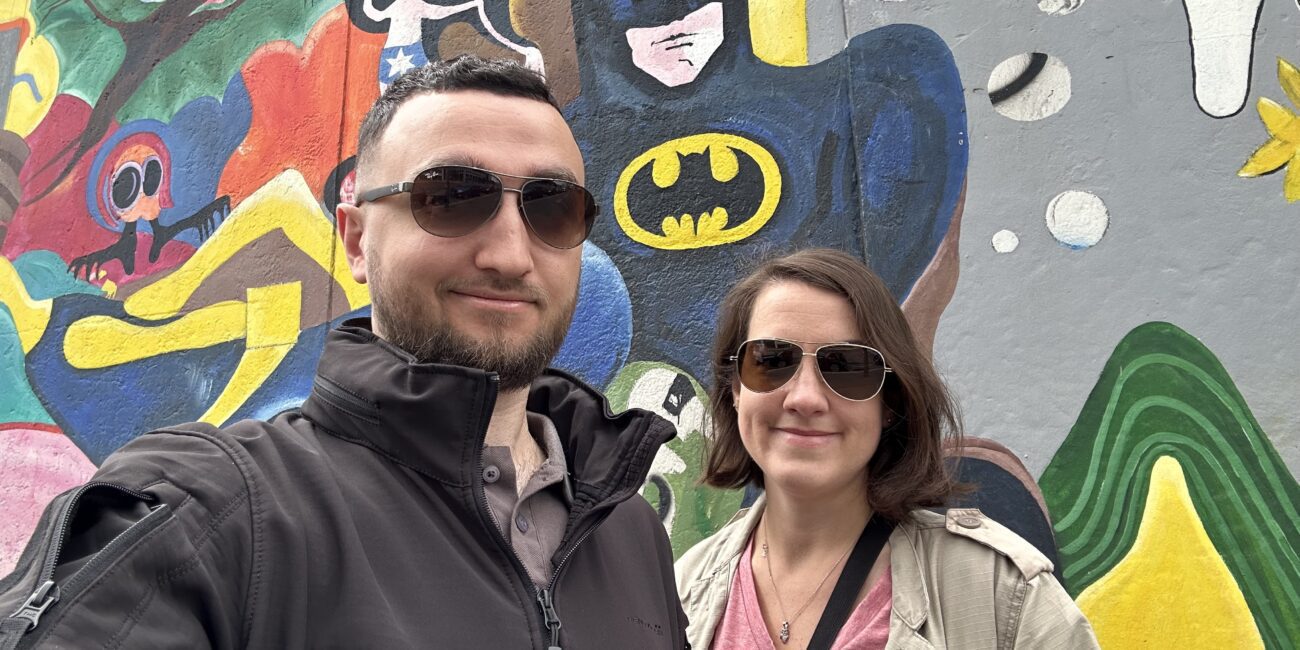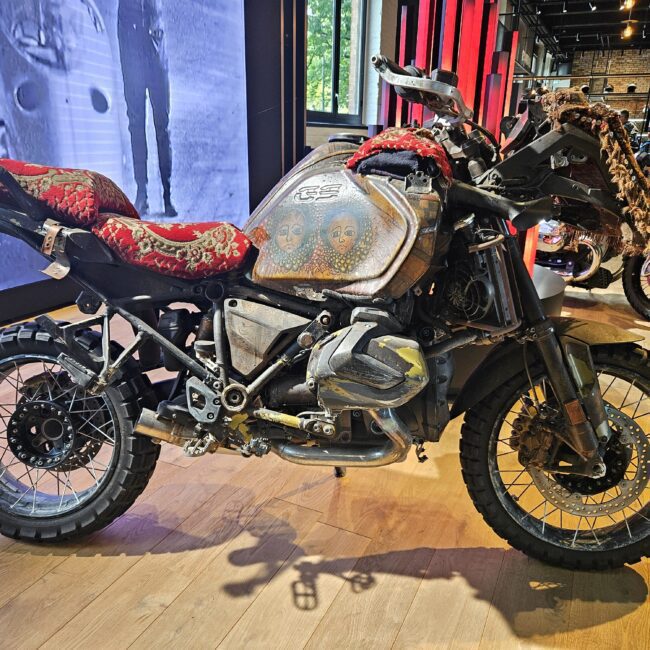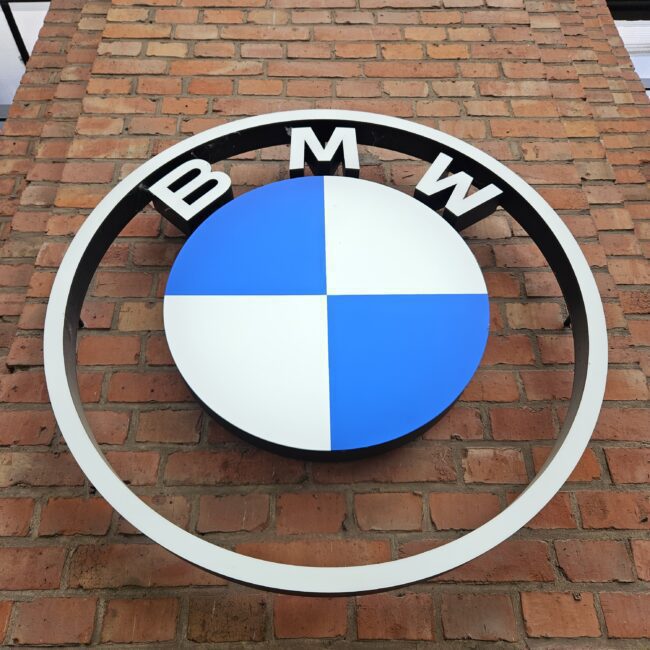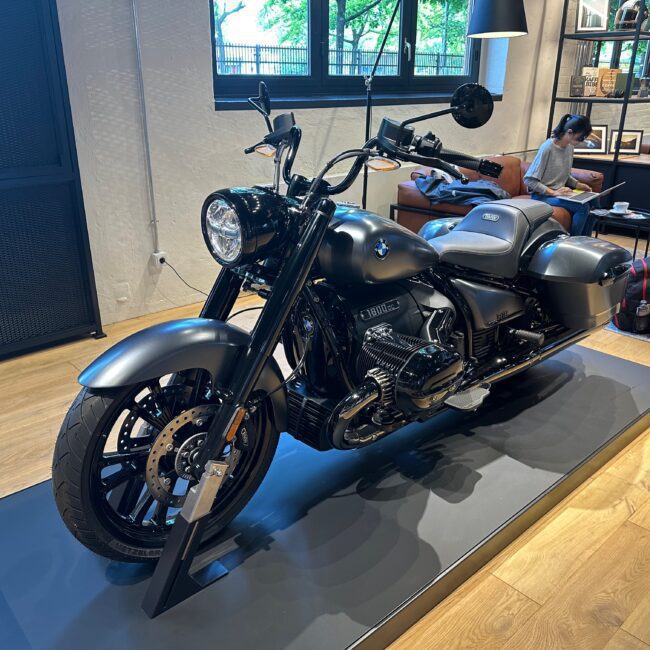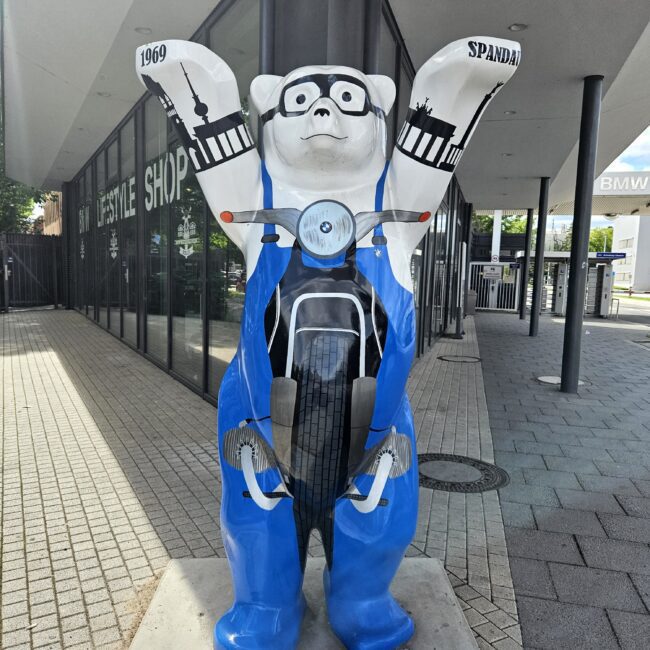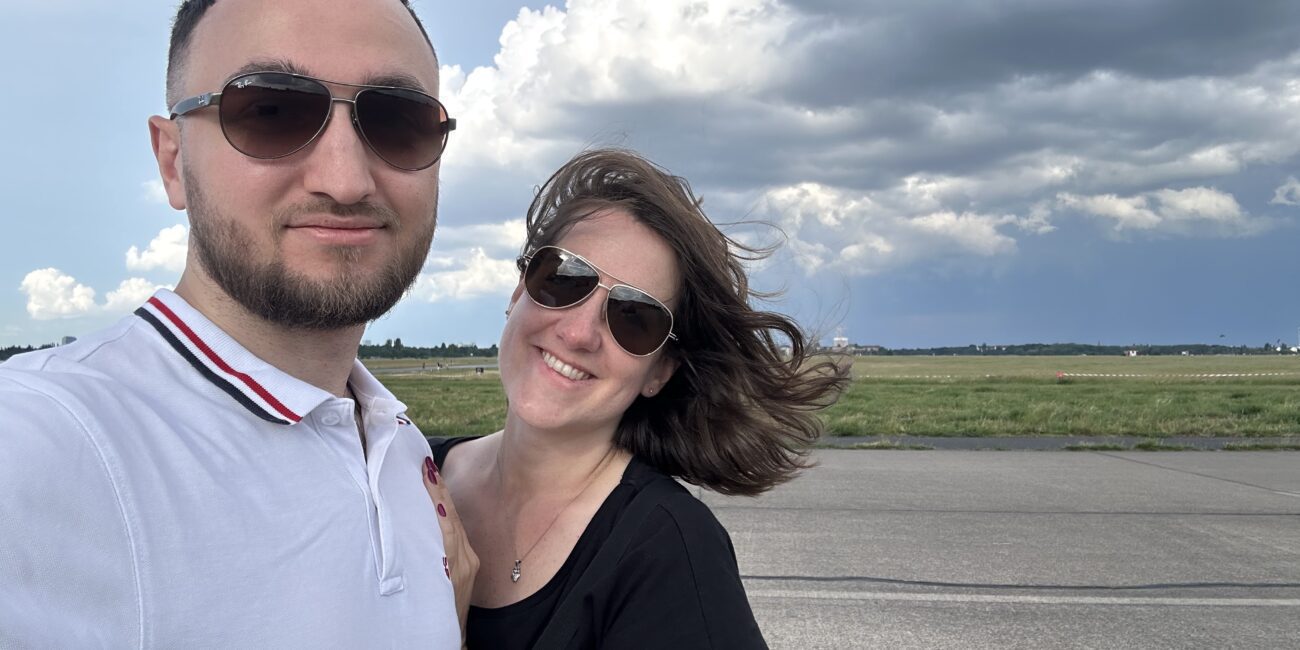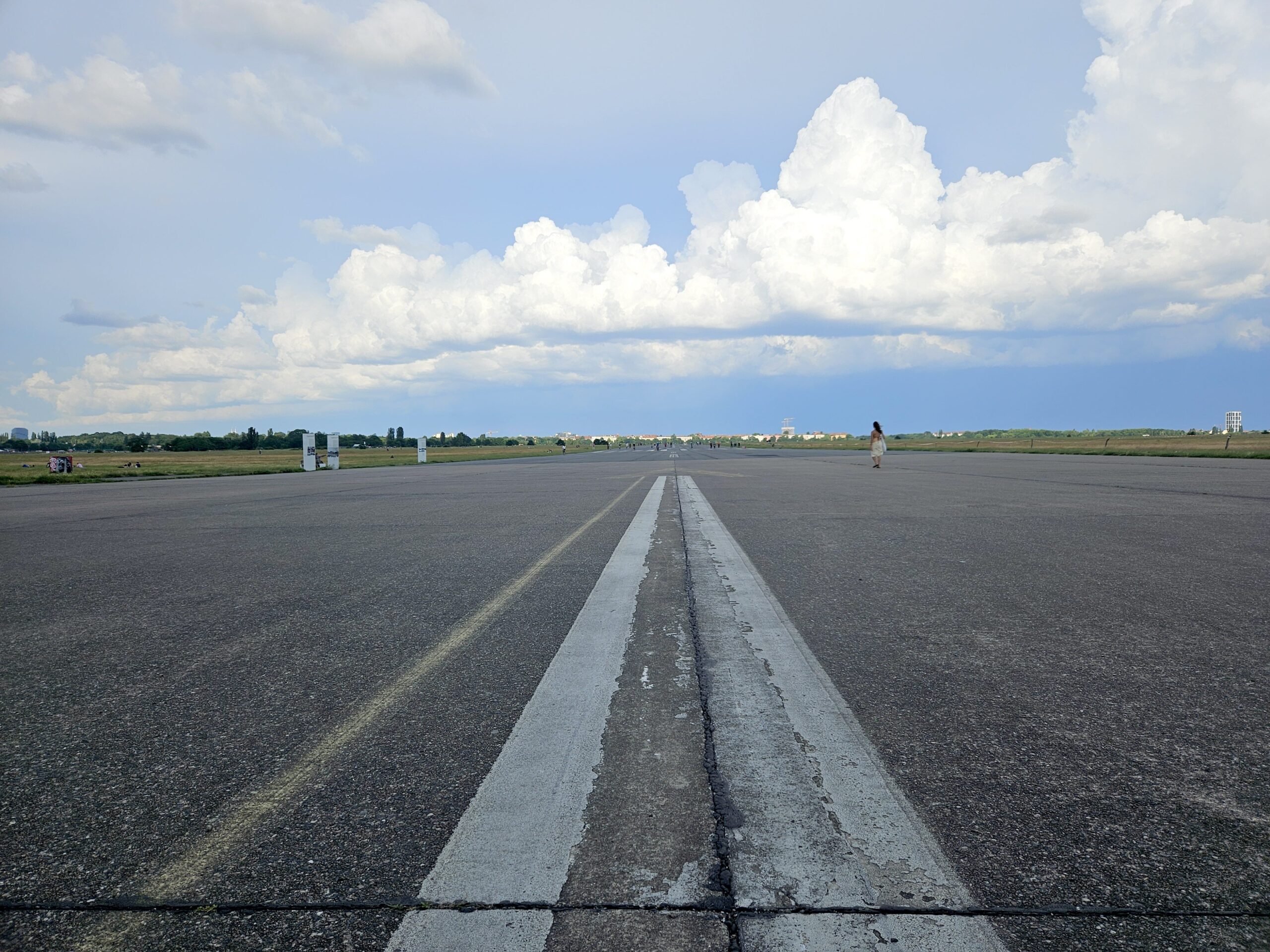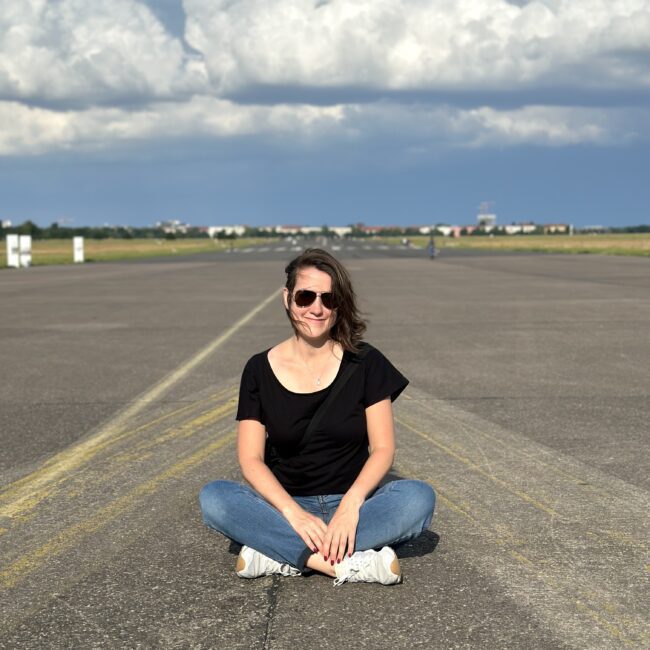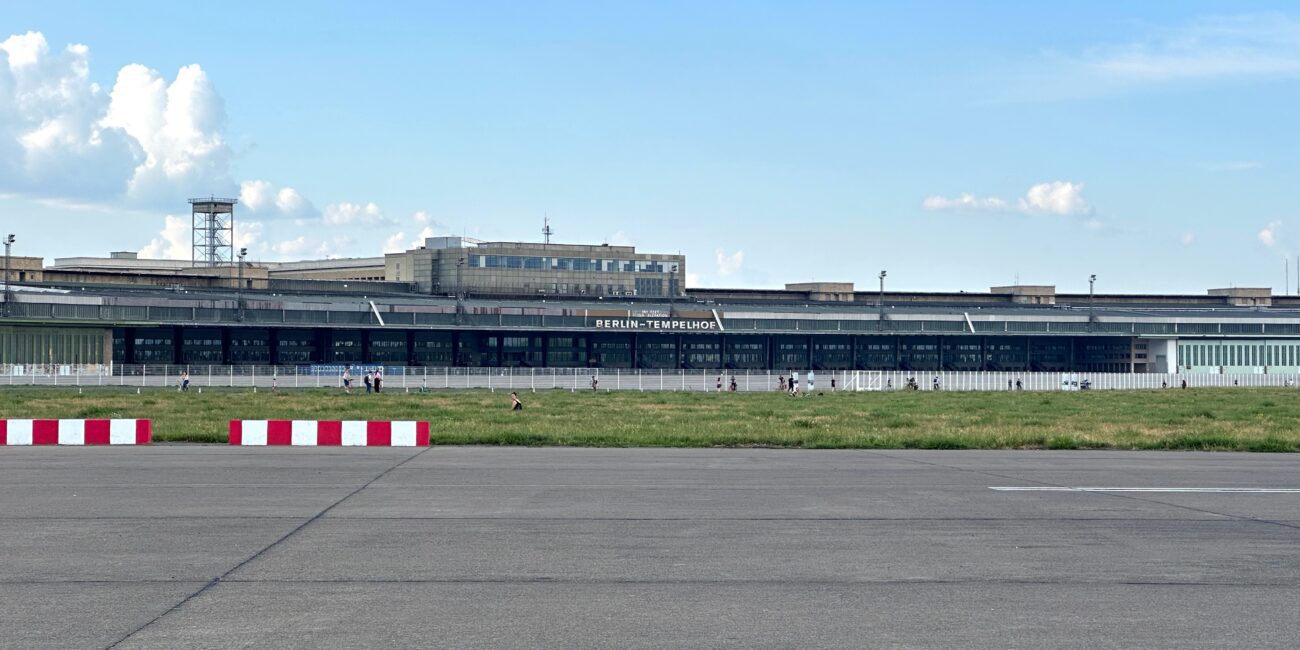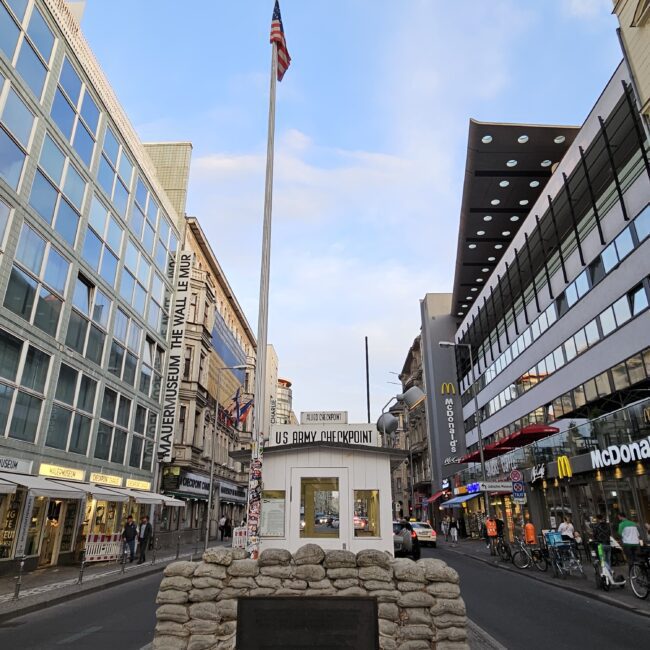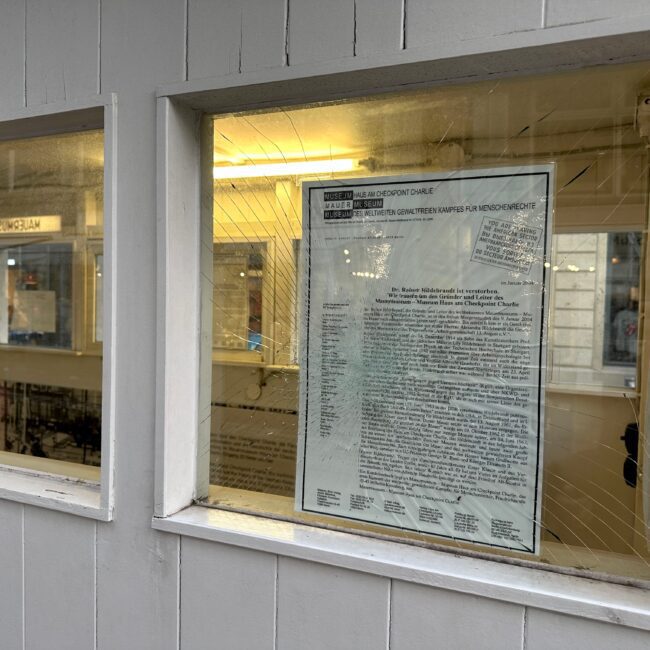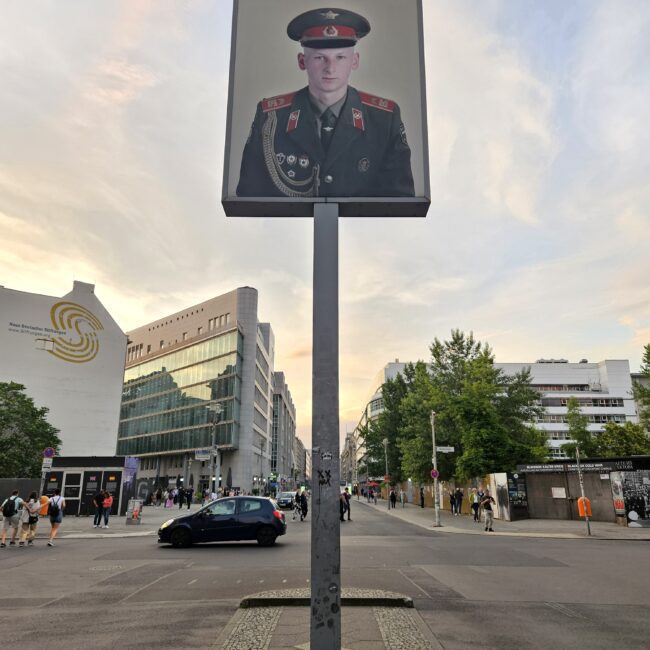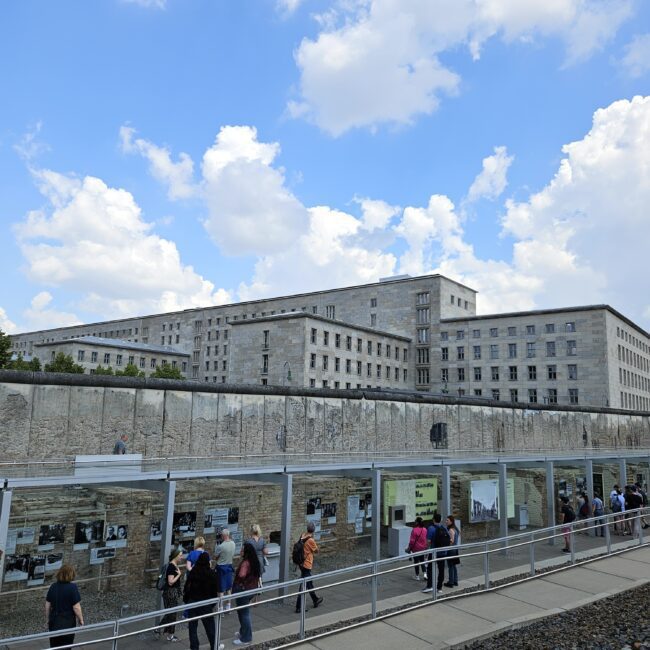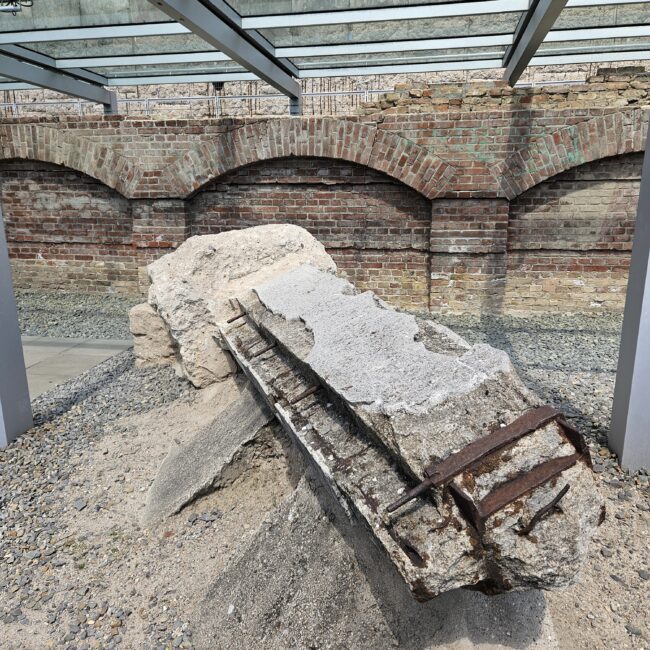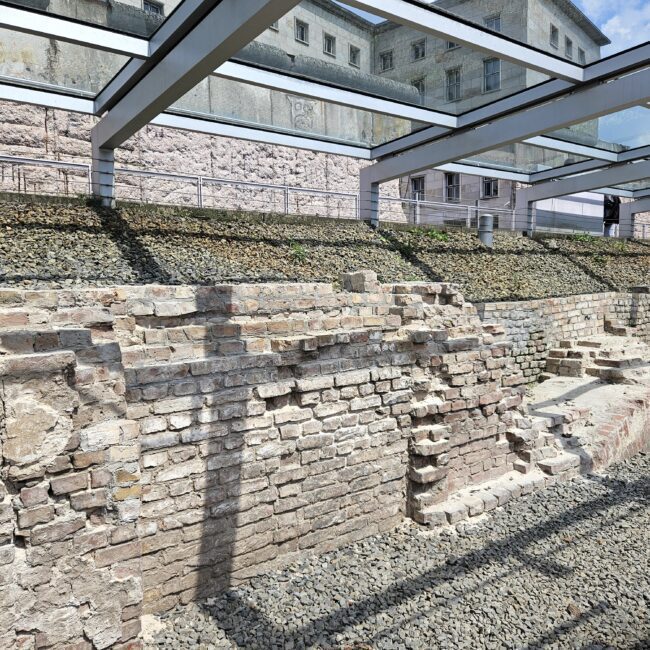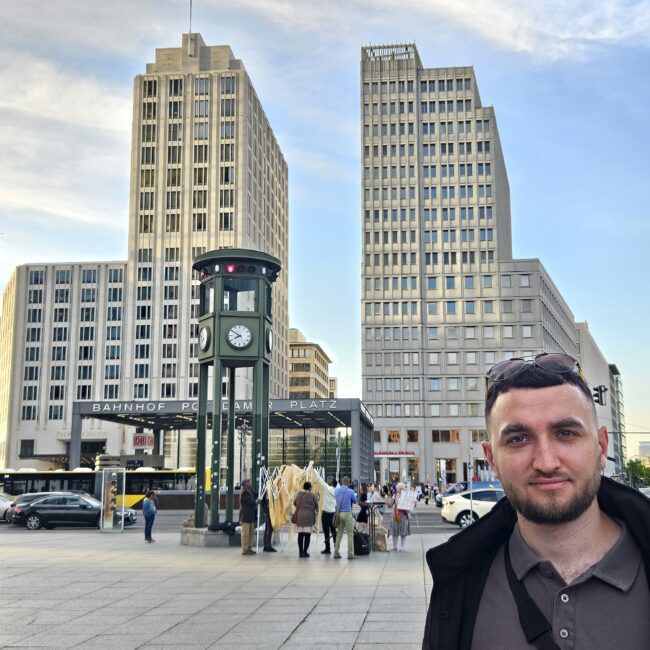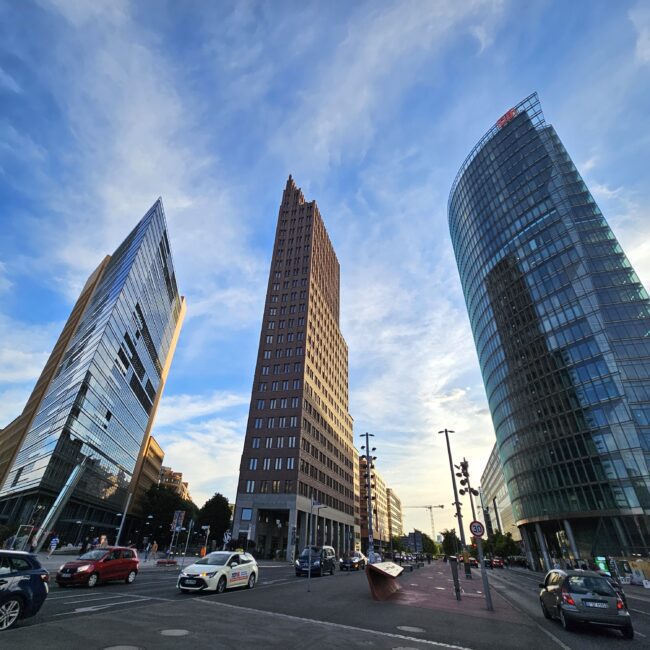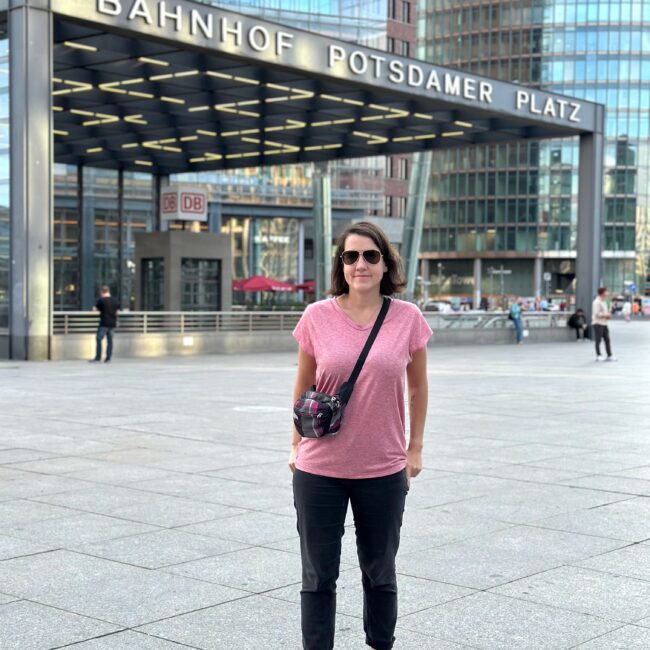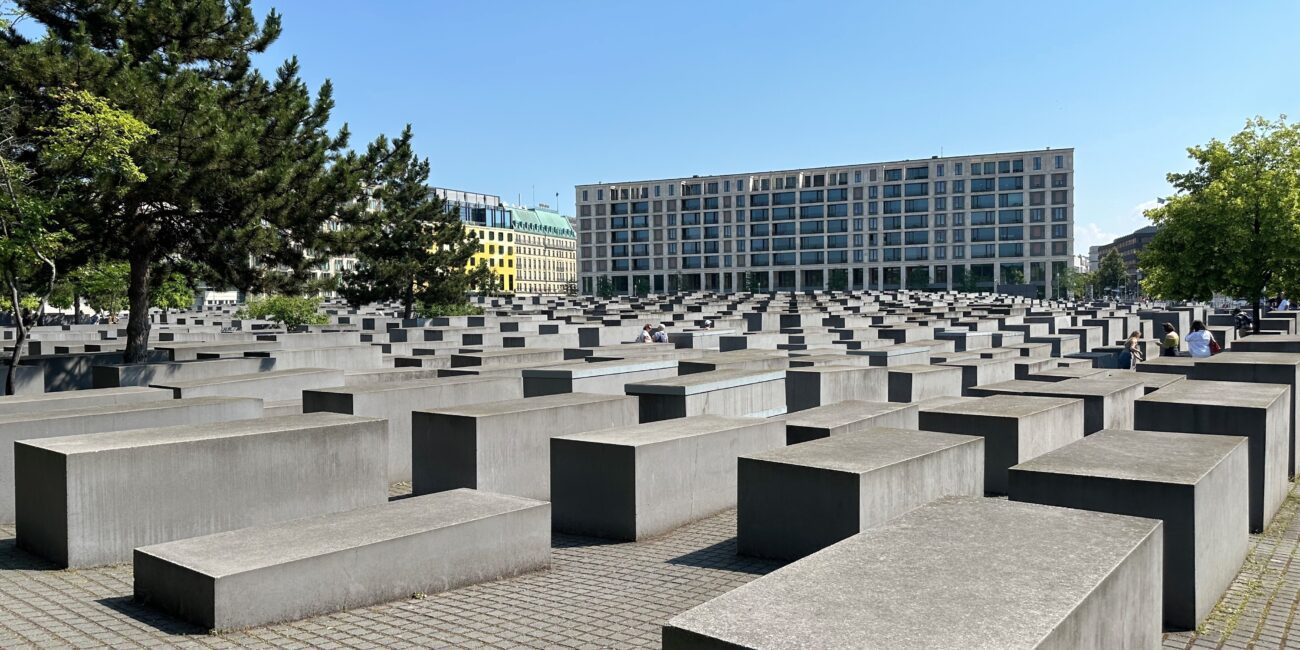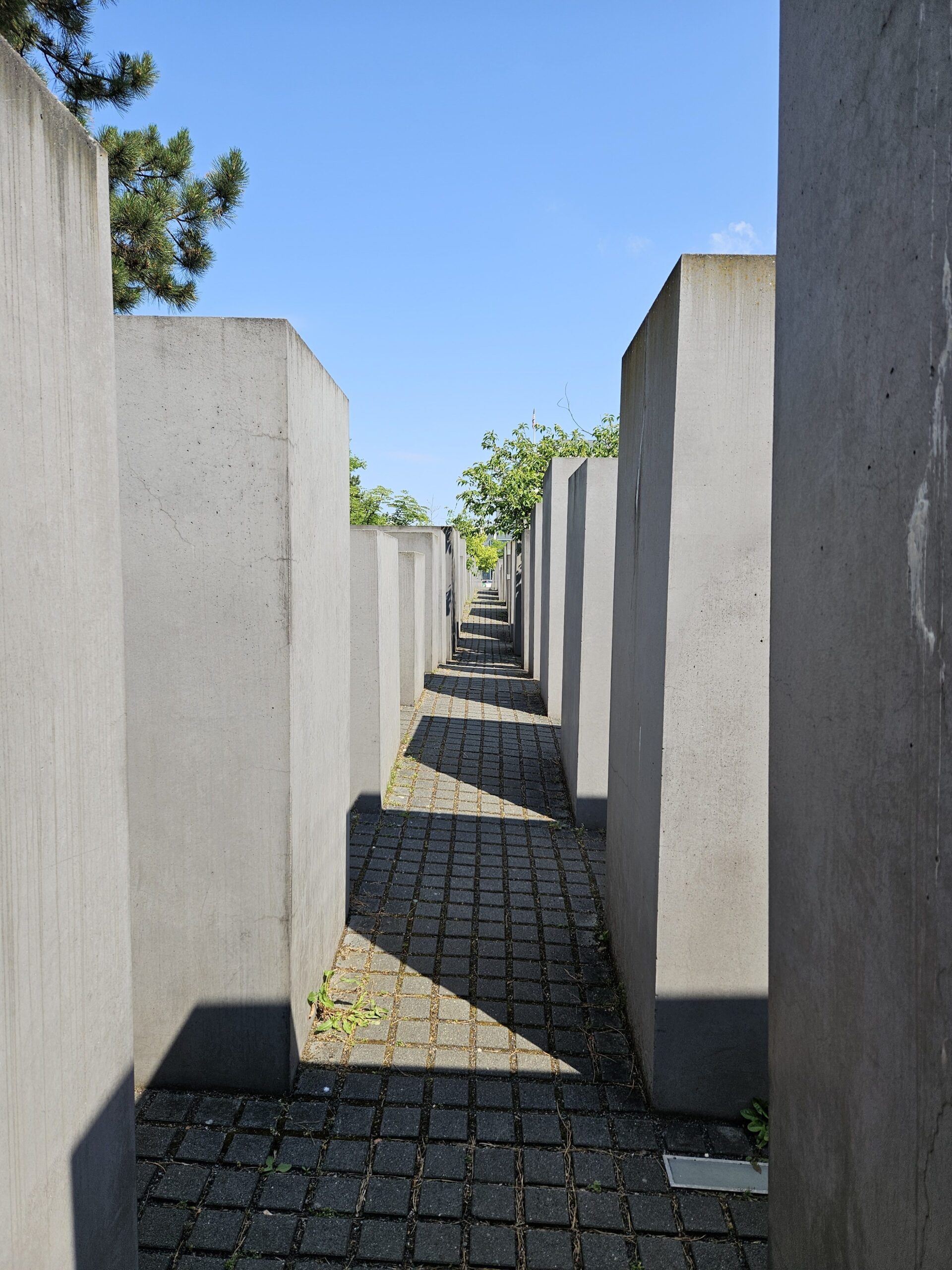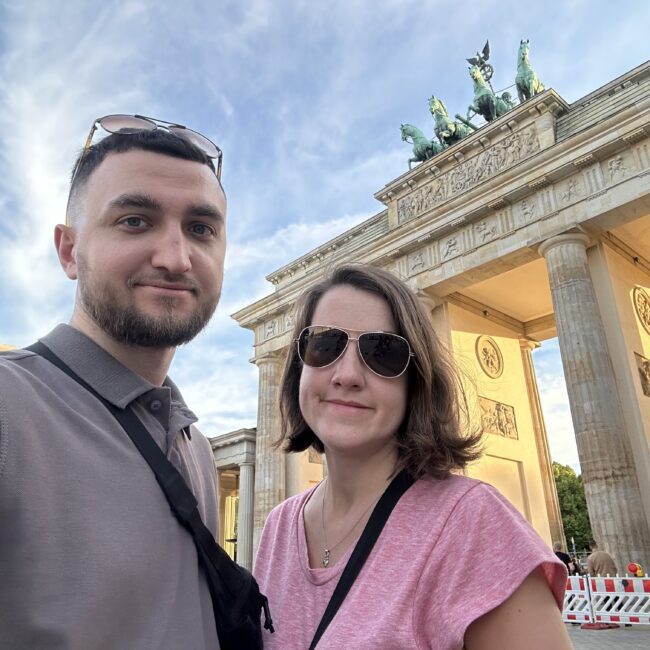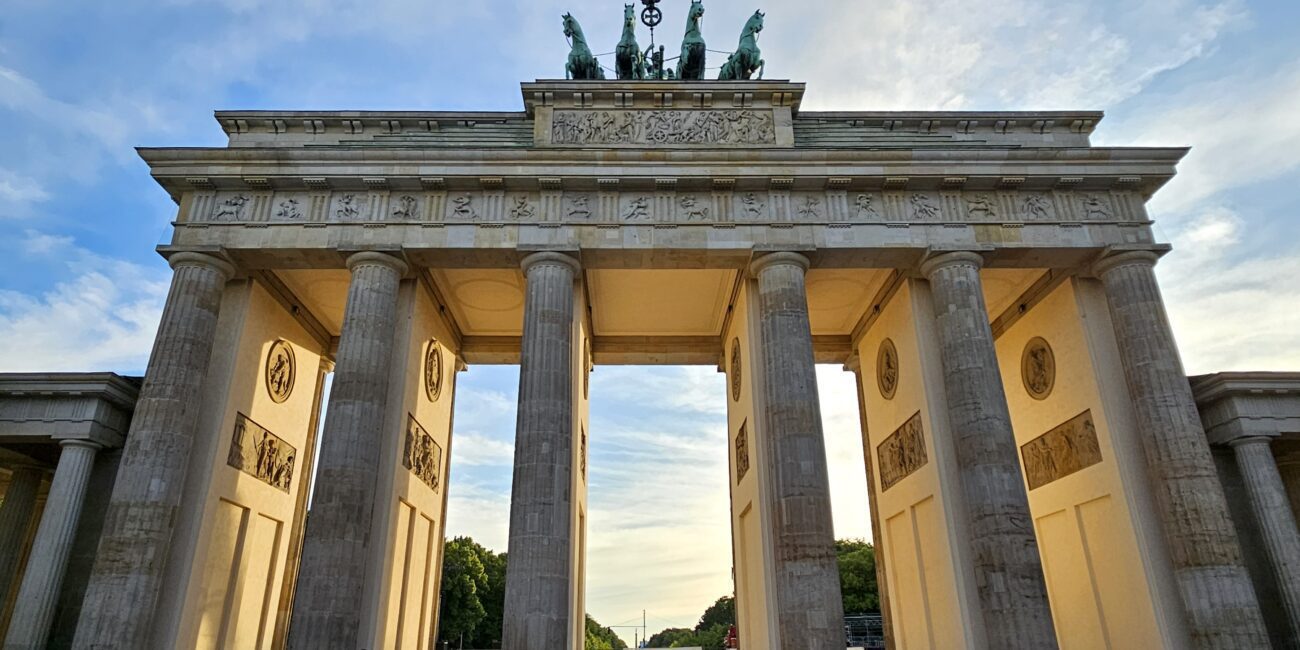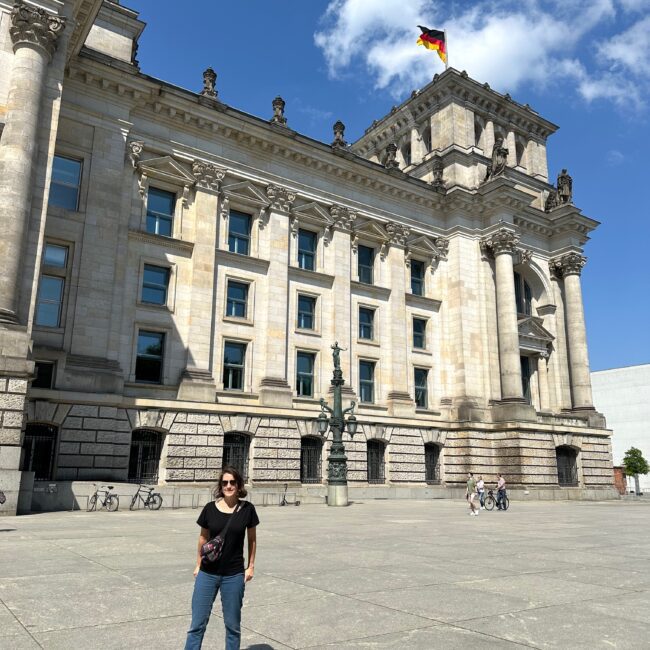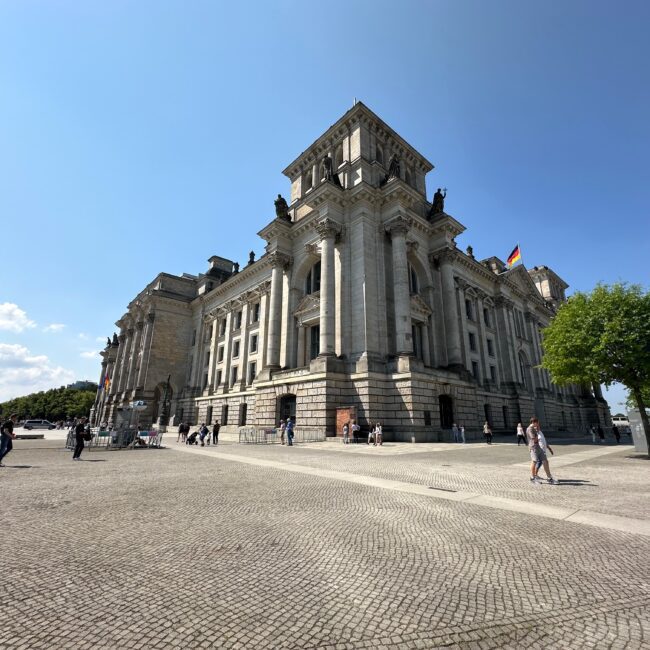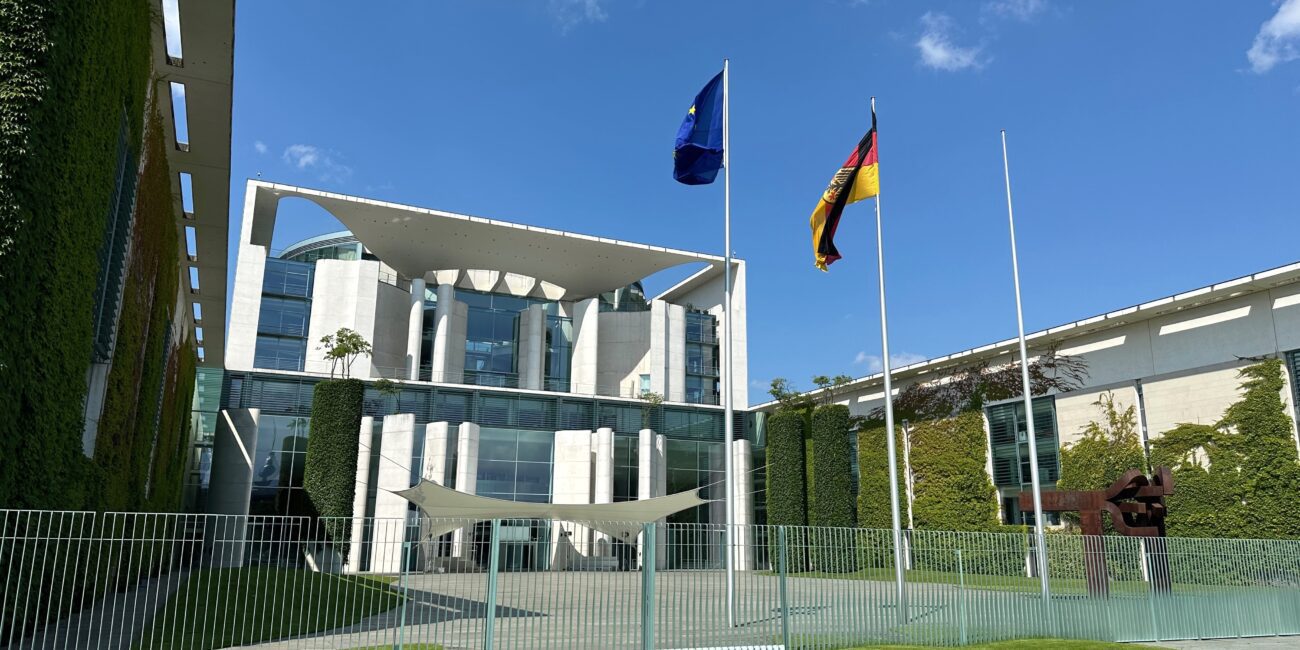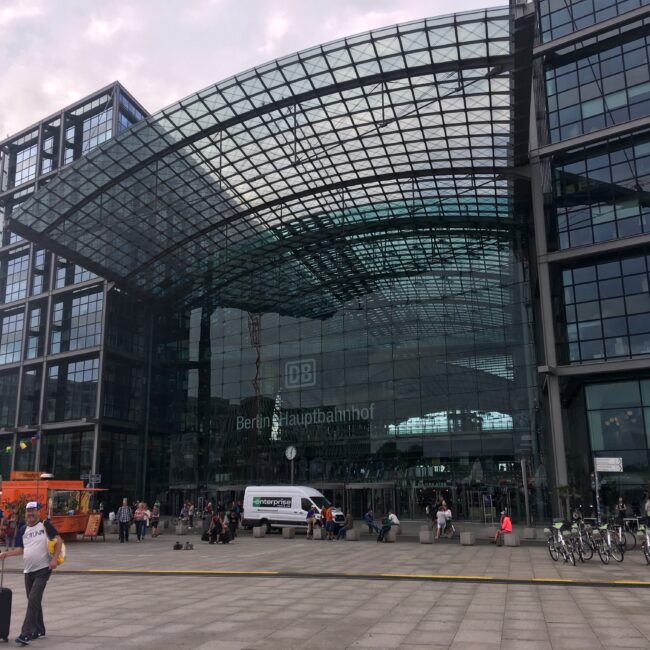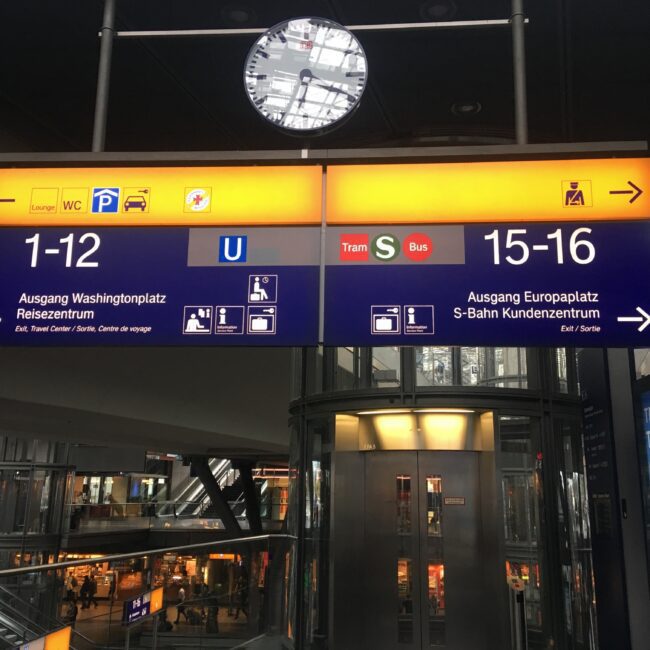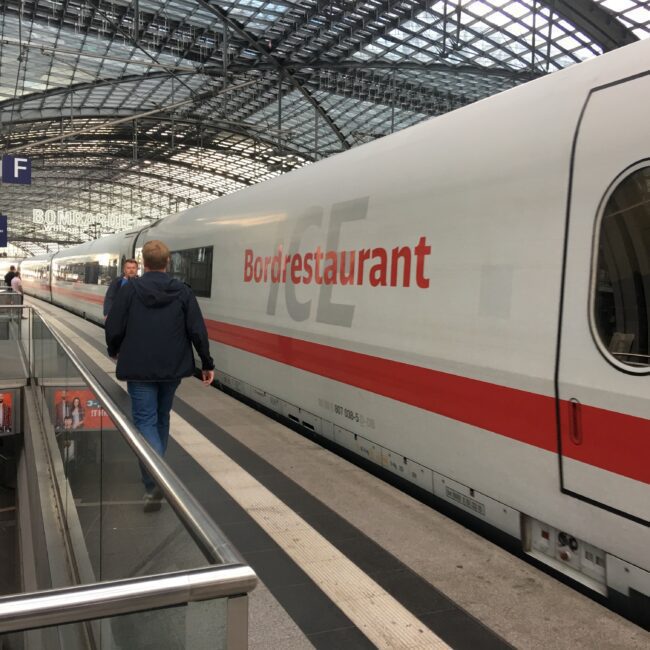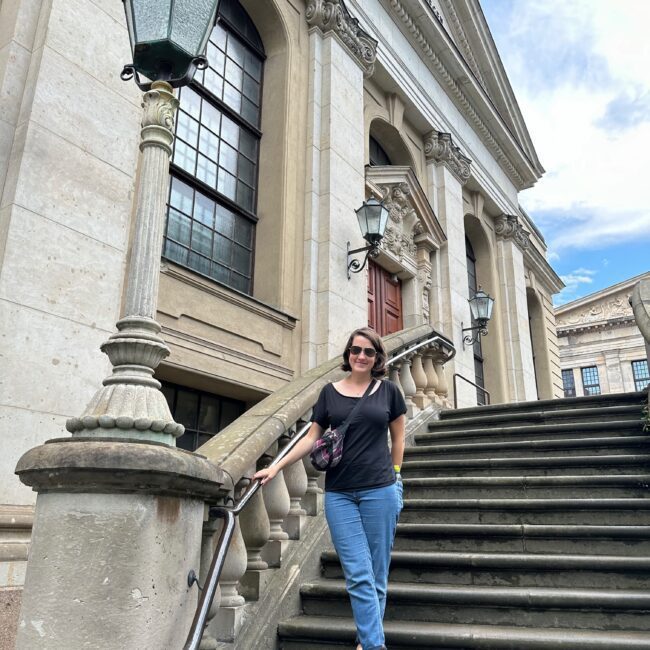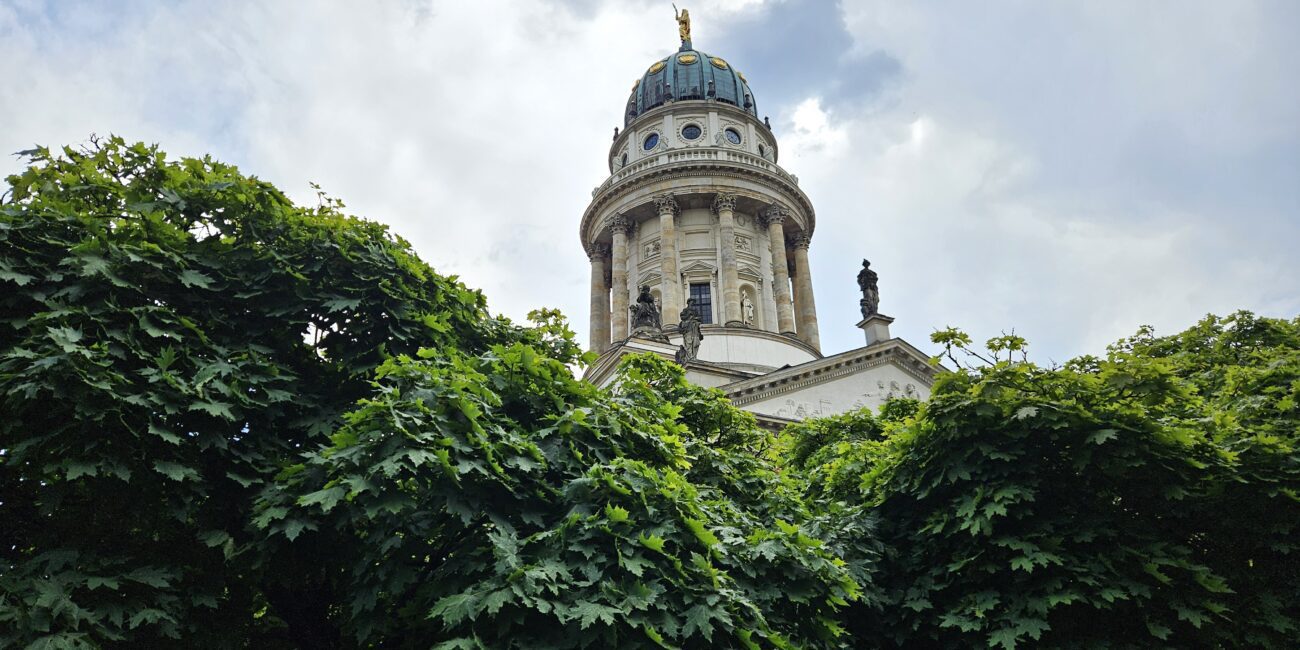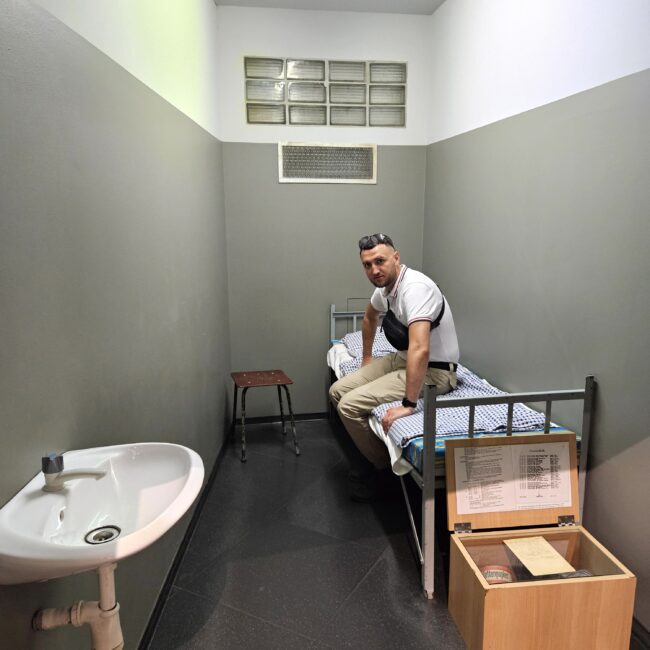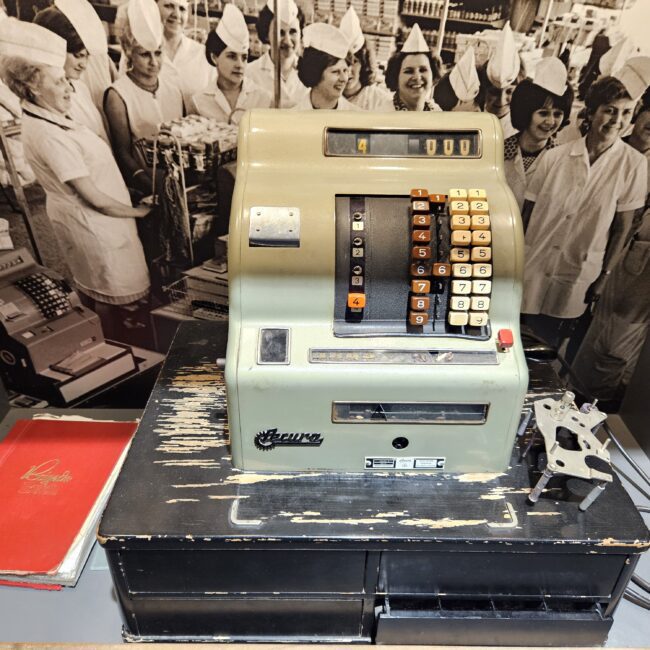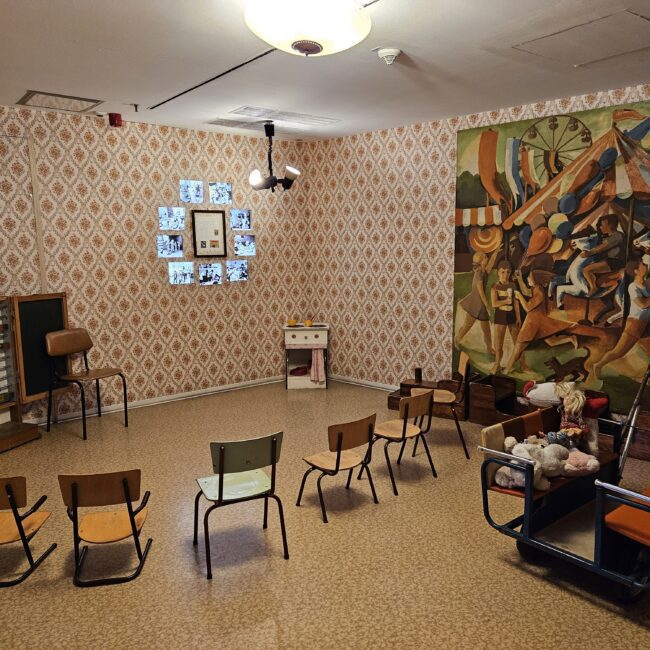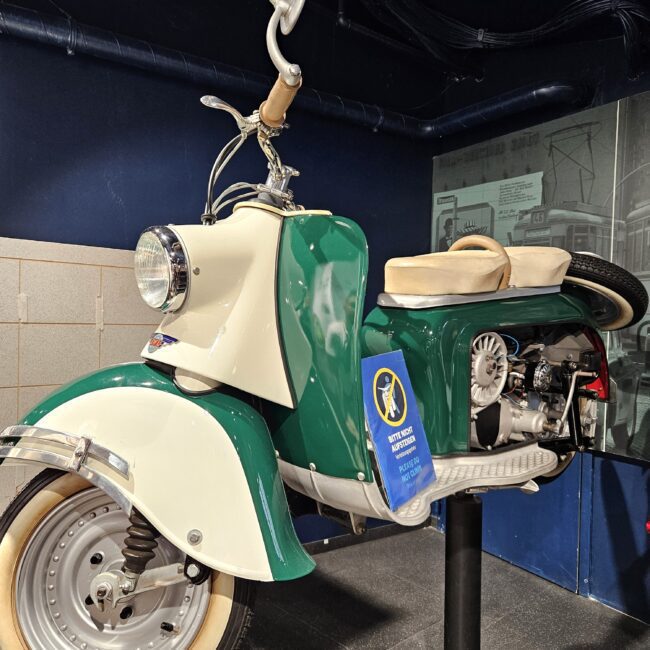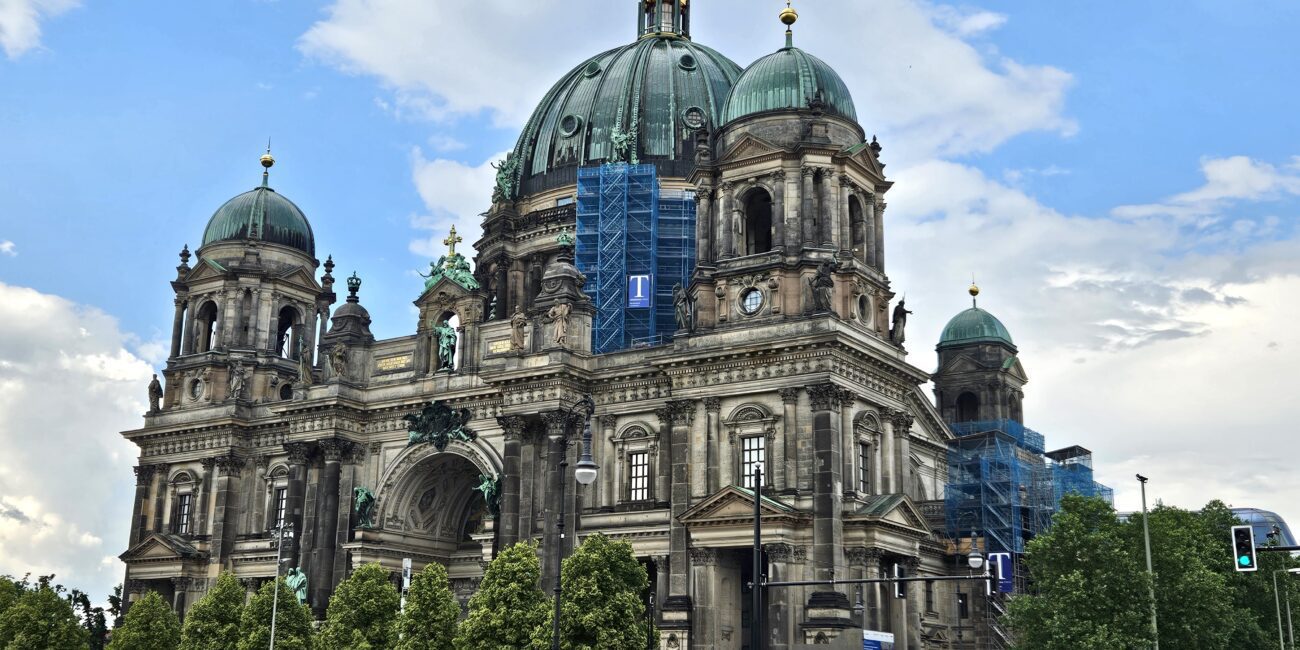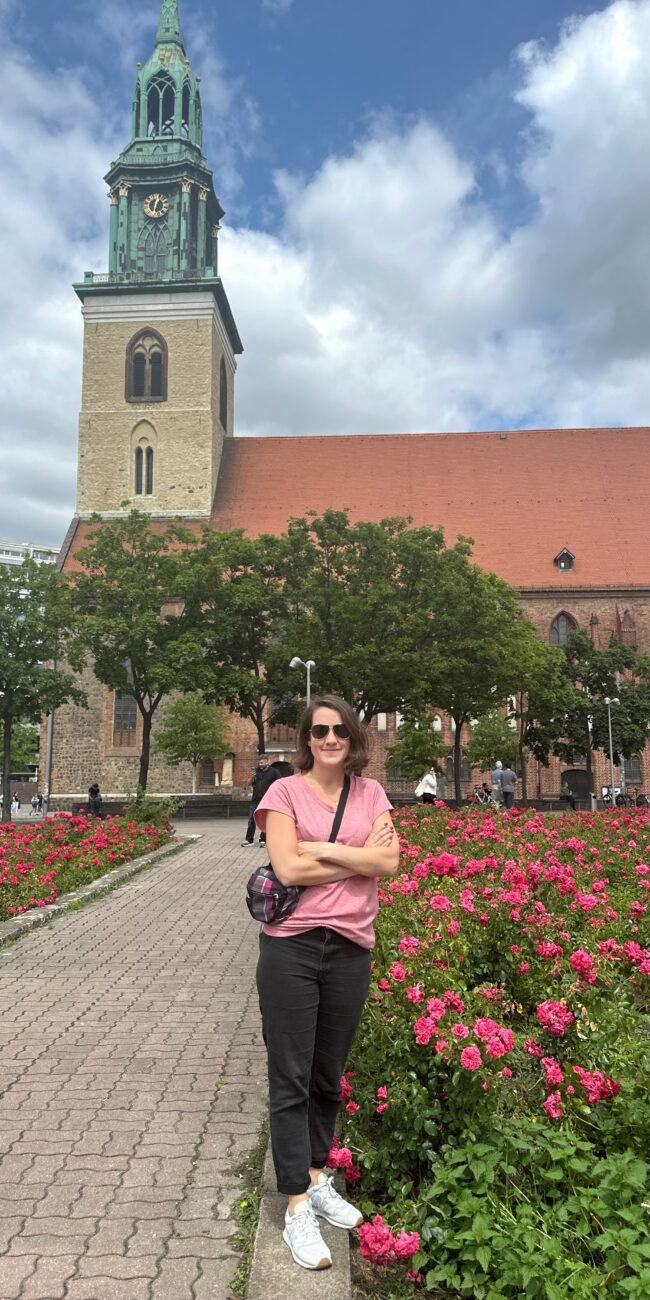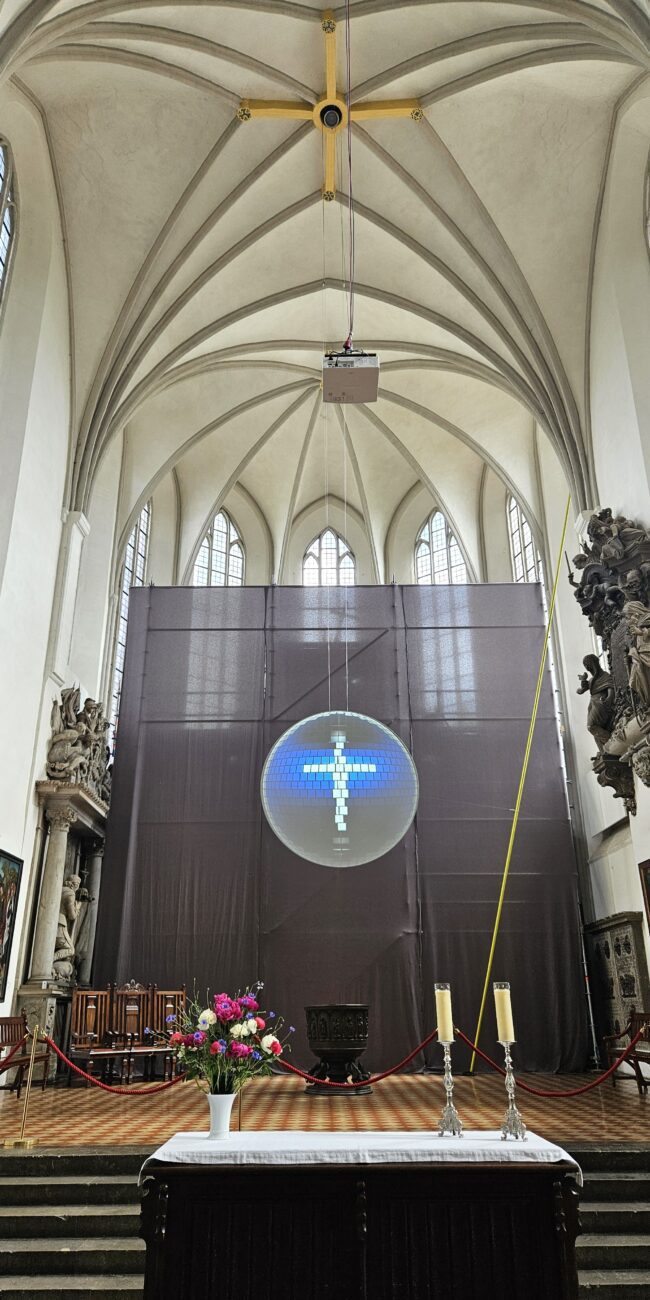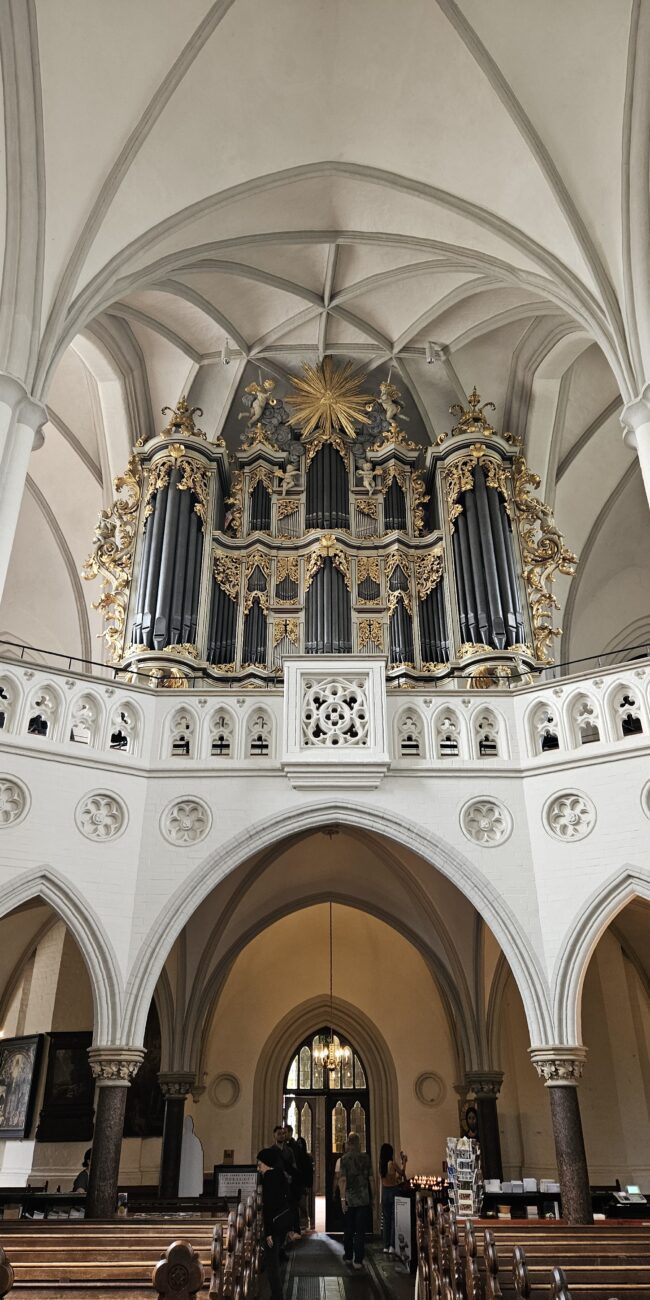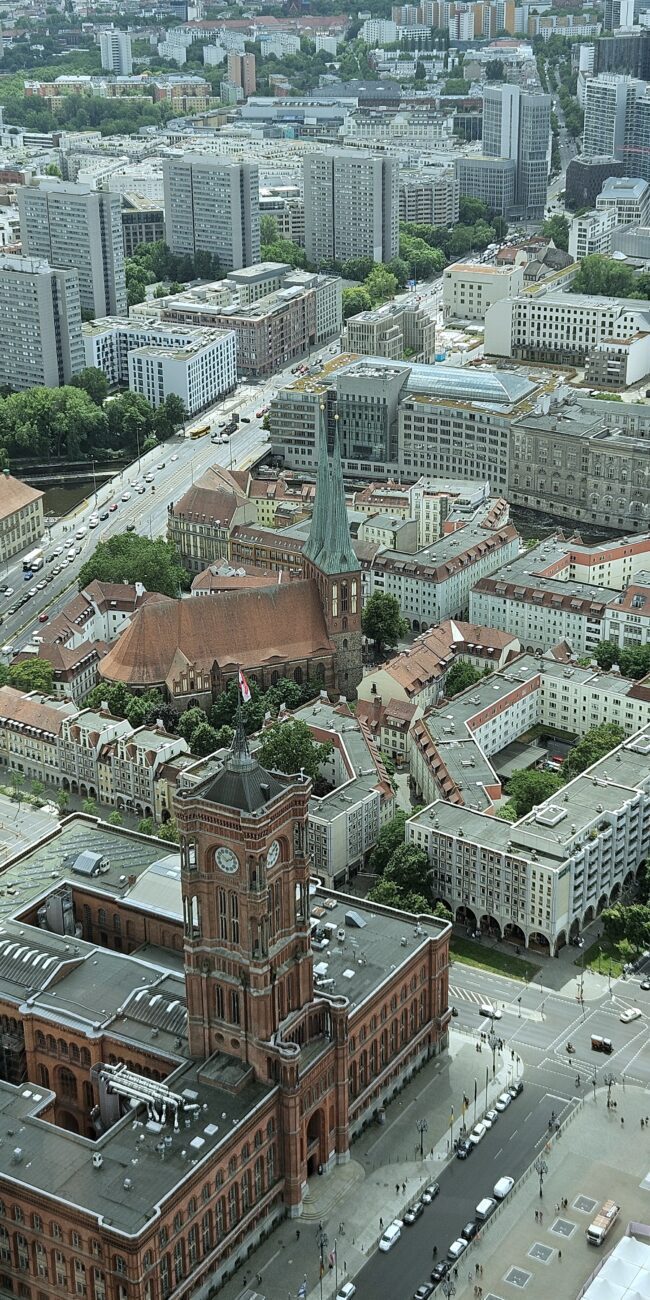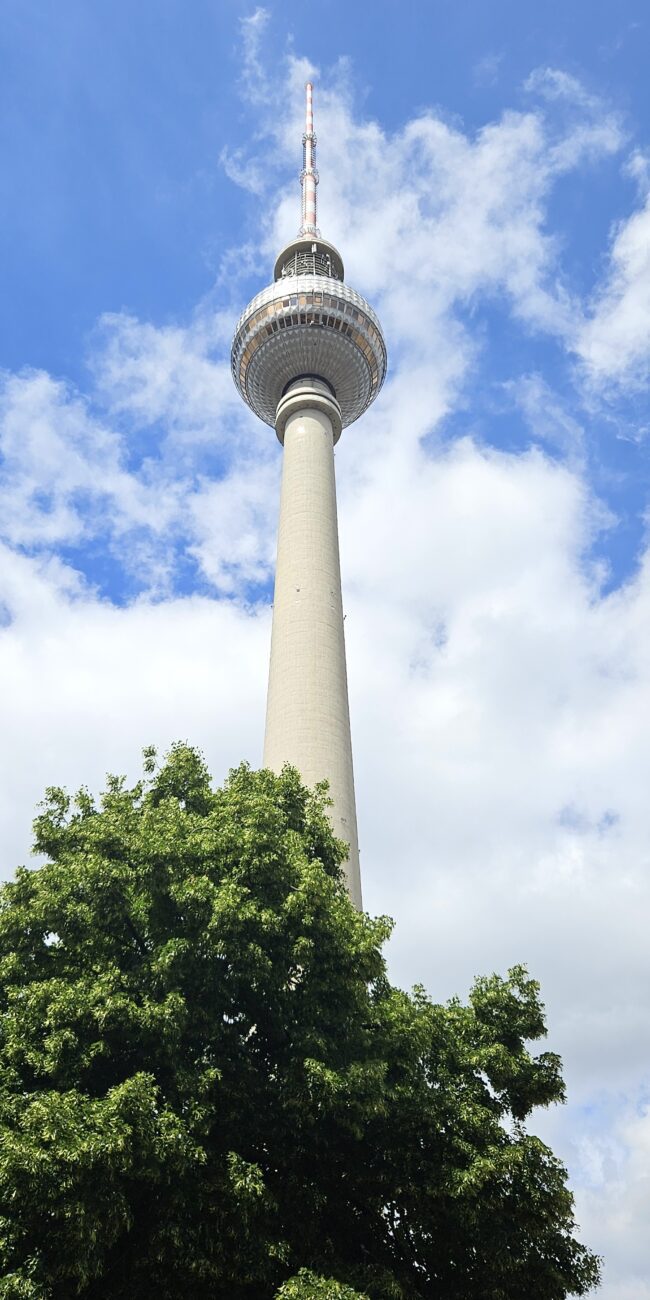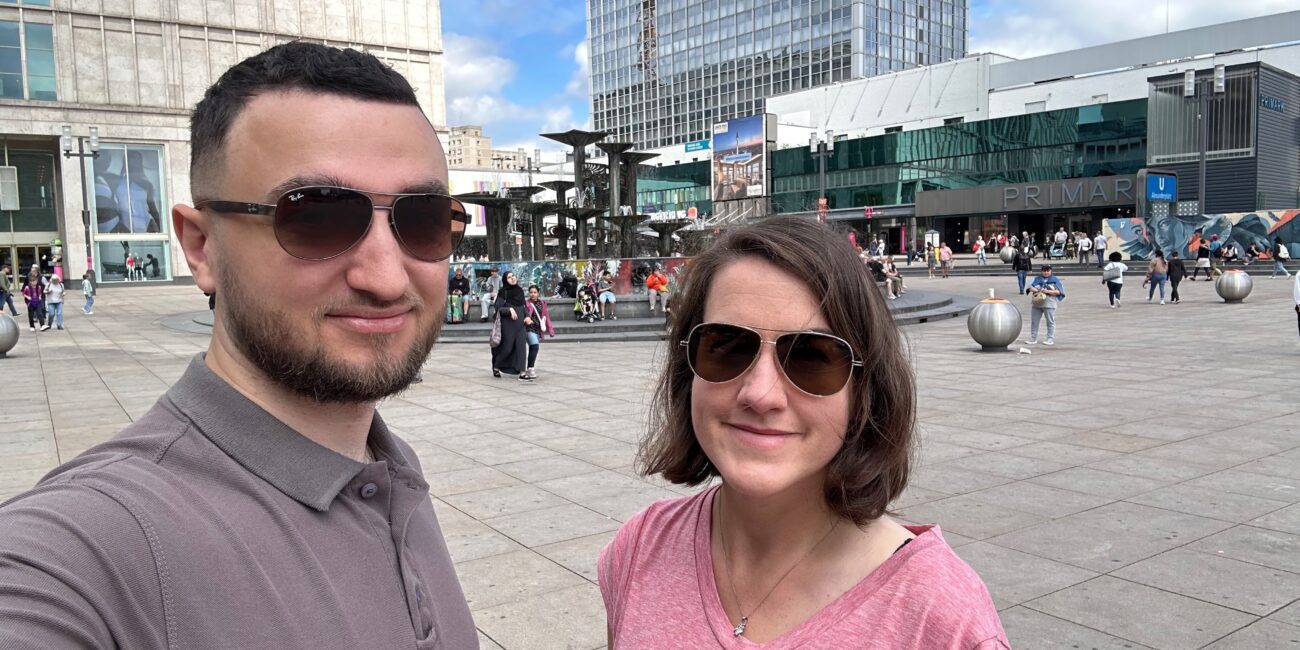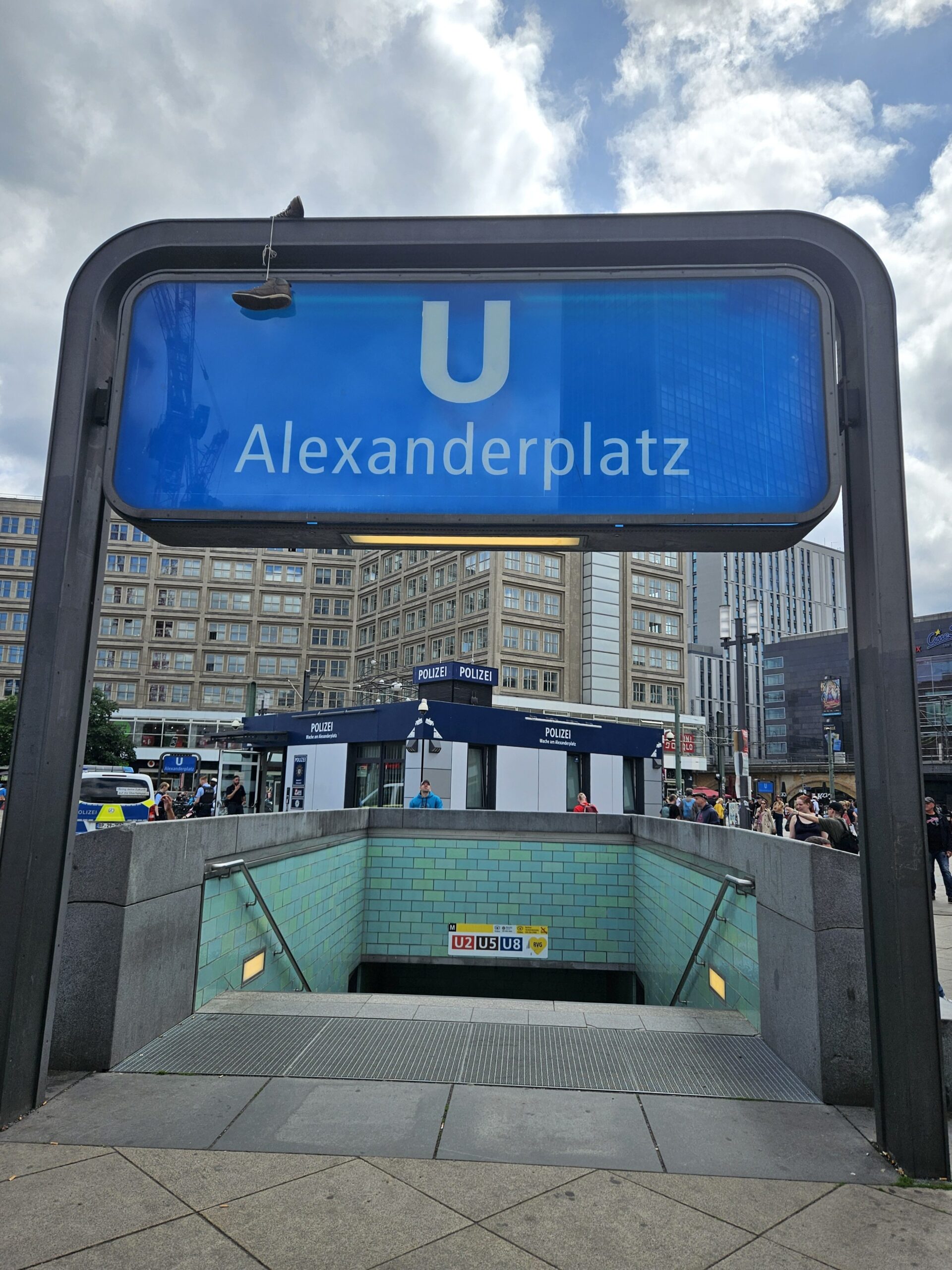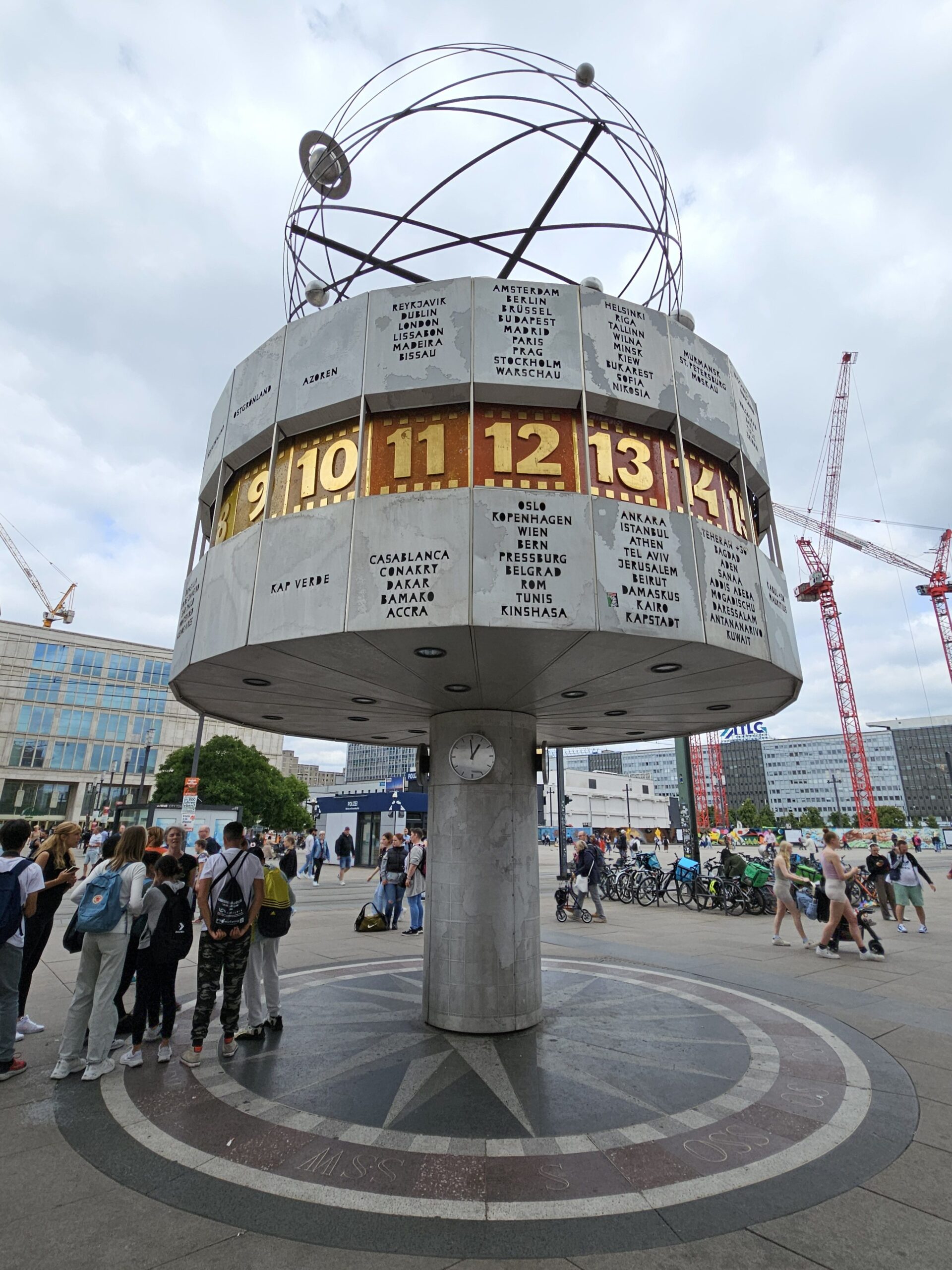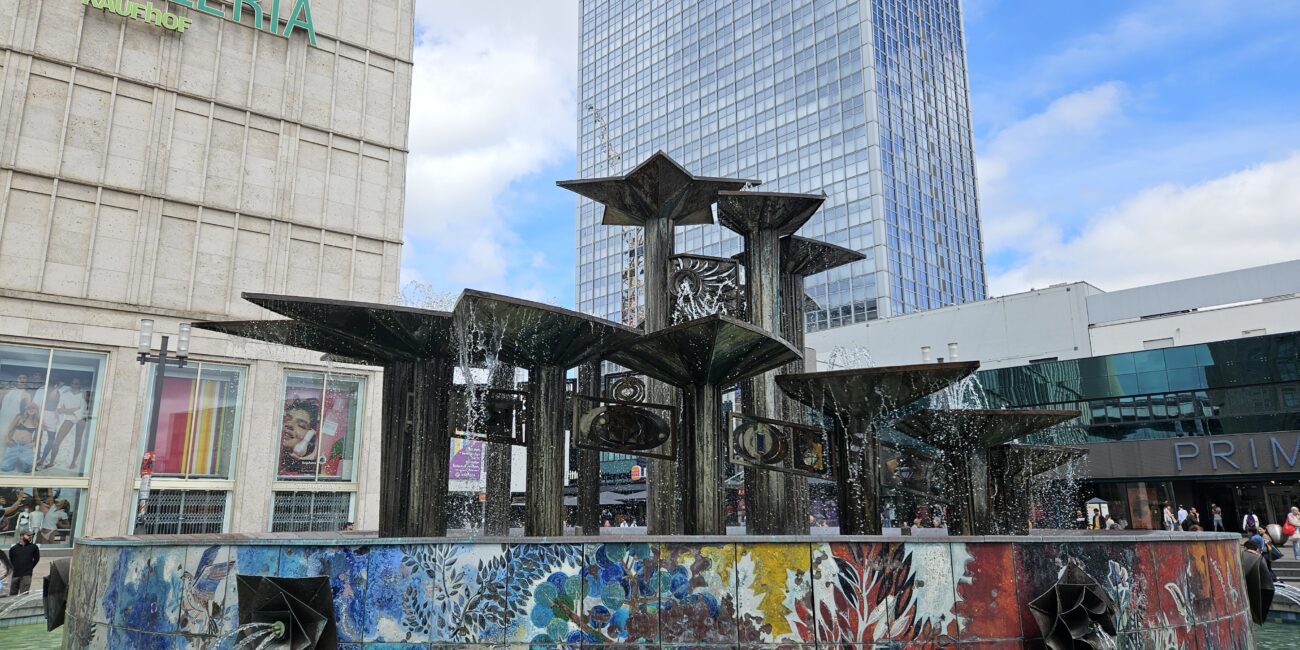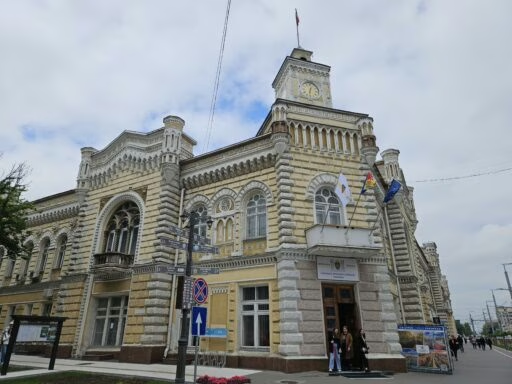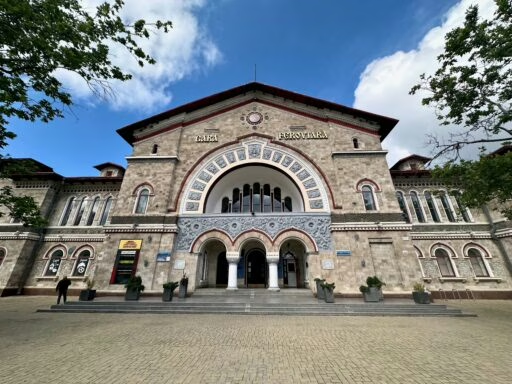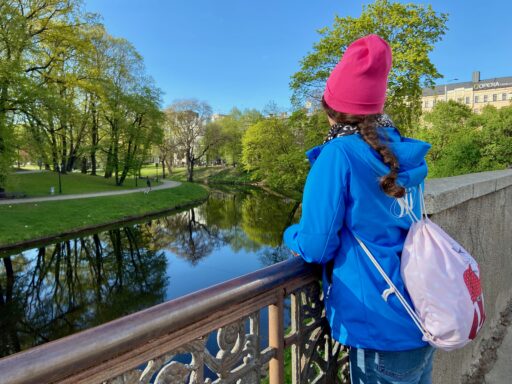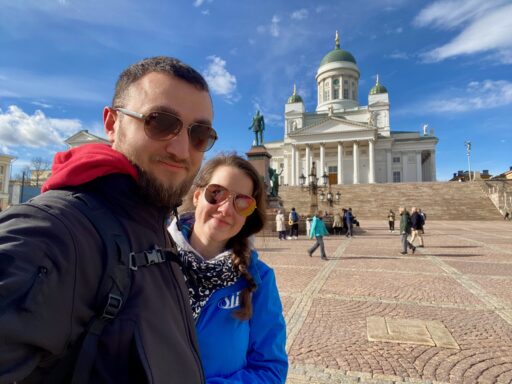This post is also available in:
Polski
Hello! 👋
During our trip to Berlin, we had the opportunity to visit several places that will definitely stay in our minds. The city did not impress us with its appearance, but it has something about it that makes it different from other European capitals. This was not a typical tourist trip, because instead of beautiful sights and charming corners, Berlin showed us its more austere and mundane side. In this article we describe what we saw and how we evaluated our experience of the city.
If you are interested in a broader picture of our trip, we invite you to read the summary article. There you will find more details about the route, practical tips and our overall impressions of the trip.
The Berlin Wall
German: Die Berliner Mauer
The Berlin Wall is one of the most important historical sites we visited in Berlin. Built in 1961, it divided the city into East and West for almost three decades. It became a symbol of the Cold War and the division of the world into two hostile blocs. In 1989, after the wall fell, Berlin was reunited, and today its remains serve as a memorial to the turbulent times of division.
One of the most famous parts of the Berlin Wall is the East Side Gallery. There you will find murals created by artists from around the world who have transformed the site into a living gallery of symbols of freedom. As you walk along the Wall, you can feel not only the traces of the past, but also the energy of hope and change that the artists have expressed on the walls. Each work of art captures a personal interpretation of historical events, creating a unique combination of the past with a vision of a better future.
BMW Motorrad, Berlin Plant
German: BMW Group Werk Berlin
During our visit to Berlin, a tour of the BMW Group Werk Berlin was not to be missed. For motorcycle fans, this is a unique place where you can see the entire production process of motorcycles, including models like the BMW R1250GS that we rode to Berlin on.
Tours of the factory are easy to book online, but it is important to pay attention to the language of the guide. We were convinced that we had chosen an English tour, but it turned out to be the opposite – the entire tour was in German. I understand a few words of that language, but Jadzia knows absolutely nothing – zero, zero, as the Germans say. Fortunately, the guide took pity on us from time to time and briefly translated what he was saying to the group into English. Still, the tour was not as interesting as it could have been if it had been entirely in English.
We saw the entire motorcycle production process, which was fascinating, especially knowing our motorcycle came from this factory in 2023. Despite the language barrier, it was still valuable to observe how the machines we later ride are built. For Jadzia, however, the tour felt a bit boring since she couldn’t follow much of the conversation
Photography and cell phone use are prohibited on the factory grounds, so we were unable to capture the manufacturing process. There are lockers where you can safely leave your belongings. However, there is a museum in front of the factory entrance where we took some photos of interesting vehicles.
👉 You can purchase tickets for the tour on the official website – click here.
Berlin-Tempelhof Airport
German: Flughafen Tempelhof
While visiting Berlin, we literally accidentally landed at Tempelhof, one of Europe’s most famous and historic airports. Tempelhof Airport played a key role during World War II and during the Berlin Airlift in 1948-1949. It is a place full of history that has been a symbol of a divided Berlin for years.
In addition to its rich history, Tempelhof held significant importance for Poles, particularly during the communist era. During the 1970s and 1980s, it became a key destination for hijacked LOT Polish Airlines planes. At a time when travel to the West was heavily restricted, many saw hijacking as one of the few ways to escape to the free world.
The airport was in the U.S. zone of West Berlin, making it a “safe” landing spot for those who risked hijacking to escape Poland. At the time, there were at least 13 documented hijackings of Polish LOT planes that ended up landing at Tempelhof. As a result, there was a joke among Poles that the acronym LOT stood for “ Landing at Tempelhof” – which perfectly reflected the frequency of such events.
Today, the airport is no longer operating in its original function, but the area has been transformed into a huge park, accessible to locals and tourists. The former runways now serve as paths for cyclists, joggers and walkers. It’s a unique place where you can see the remains of the former airport infrastructure and feel the atmosphere of the old days.
Checkpoint Charlie
Checkpoint Charlie is one of the most iconic Cold War crossing points that separated East and West Berlin. Situated on Friedrichstrasse, it served as a critical location where Allied forces and citizens could cross the heavily fortified border between East Berlin (controlled by East Germany) and West Berlin (controlled by West Germany) during the city’s division. This checkpoint became a symbol of the Cold War tensions and the division between the communist and capitalist worlds.
For us, it was an interesting trip back in time to see how the place looks today in the context of the symbolism of the division of the world into two hostile blocs. Today, Checkpoint Charlie is a tourist attraction, surrounded by a museum and exhibitions that tell the story of the Berlin Wall, the Cold War, and the many dramatic attempts to escape from East Germany to the West.
Topography of Terror
German: Dokumentationszentrum Topographie des Terrors
Topography of Terror is a place that we believe should be a mandatory stop for Poles visiting Berlin. Located on the site of the former headquarters of the Gestapo, the SS and the Nazi Main Security Office, it documents the brutal actions of the Nazi regime. In addition, the exhibits detail the persecution that affected millions of people, including many victims from Poland. For this reason, this memorial has a special significance for Poles, given the enormity of the suffering experienced by our nation during World War II.
For us, it was an extremely shocking and thought-provoking visit, reminding us of Nazi crimes and victims that should never be forgotten. What’s more, the Topography of Terror has an austere, minimalist feel that heightens the weight of history and the emotions the place evokes. It is worth mentioning that the museum is free of charge, which is an important aspect. Given the subject matter, it would be downright inappropriate to charge admission to such a place.
This allows any visitor, regardless of financial assets, to learn about the brutal history of Nazi crimes.
👉 For more information, visit the official website – click here.
Potsdamer Platz
Potsdamer Platz is one of the fastest growing areas in Berlin, combining modern architecture with a rich historical heritage. During the Second World War, the square was almost completely destroyed. After the war, during the years of the Berlin Wall, the area was a dead zone separating the eastern and western parts of the city.
Today, Potsdamer Platz symbolizes the rebirth of Berlin after German reunification. Here you can see impressive skyscrapers and futuristic buildings designed by world-famous architects. It has also become a modern center of business, culture and entertainment. There are numerous cinemas, theaters, restaurants and shops, making Potsdamer Platz a popular tourist destination.
Thanks to these changes, the square today serves as an example of Berlin’s transformation into a dynamic city that combines history and modernity.
Memorial to the Murdered Jews of Europe
German: Denkmal für die ermordeten Juden Europas
The Memorial to the Murdered Jews of Europe is one of the most emotional places in Berlin. Built in honor of the six million Jewish victims of the Holocaust, it is located near the Brandenburg Gate, emphasizing its role as a central memorial.
The memorial consists of 2,711 concrete pillars of different heights that form a labyrinth. Walking among them, one senses not only an unimaginable history, but also a symbolic sense of loss that alludes to the fate of the Holocaust victims. This place invites deep reflection and is an integral part of Berlin’s memory space.
The Brandenburg Gate
German: Brandenburger Tor
The Brandenburg Gate is one of Berlin’s most iconic landmarks, symbolizing the city’s history and rebirth after the Cold War. Built in 1791, it was originally intended to be a triumphal gate symbolizing peace. Its architecture was inspired by ancient Greece. However, it became a symbol of the division of Germany when it stood for years on the border between East and West Berlin, in the death zone around the Berlin Wall.
After the reunification of Germany in 1989, the Brandenburg Gate became a symbol of the country’s peace and unity. It now attracts millions of tourists from all over the world to see this historic site.
At the top of the gate is the famous Quadriga. The statue represents Victoria, the goddess of victory, driving a chariot drawn by four horses. Over the years, the Gate has witnessed many important events. These include triumphal marches, destruction during wars, and political demonstrations. After the fall of the Berlin Wall in 1989, it became a symbol of German reunification and a new, united Europe.
The Parliament Building
German: Deutscher Bundestag
The German Parliament is one of Berlin’s most recognizable landmarks and an important symbol of modern German democracy. The Reichstag building, which now houses the Bundestag, has a long and turbulent history. It was completed in 1894 to serve as the seat of the German parliament. In 1933, however, the Reichstag was destroyed in a fire that symbolically ushered in the era of Nazi terror. As a result, the building remained in ruins for many years.
After Germany reunited, the government chose to rebuild the Reichstag. The modernization finished in 1999, and the building once again served as the home of the German parliament. A glass dome was added at this time, symbolizing the transparency of German democracy. This modern feature gave the Reichstag a contemporary look and new significance, aligning with the values of a unified and democratic Germany. Visitors can now view parliamentary sessions from the dome, highlighting the openness of the political process.
👉 For more information, visit the official government website – click here.
German Chancellor’s Office
German: Bundeskanzleramt
The Bundeskanzleramt is the German Chancellor’s headquarters and one of the world’s largest government buildings. Opened in 2001, the building is located in the government district of Berlin, near the Reichstag and the Brandenburg Gate. It is an impressive example of modern architecture, designed by Axel Schultes and Charlotte Frank, characterized by its simple but monumental form.
The Bundeskanzleramt building is a key symbol of modern Germany and functions as the administrative center for political meetings. Its vast size and modern design have led locals in Berlin to humorously nickname it the “Waschmaschine” (washing machine).
👉 For more information, visit the official government website – click here.
Berlin Central Station
German: Berlin Hauptbahnhof
Berlin Hauptbahnhof is the largest and one of the most modern train stations in Europe, opened in 2006. It is Berlin’s key transportation hub, serving both national and international trains as well as local S-Bahn lines. The station is located on the Spree River near the Bundestag building, making it easily accessible to locals and tourists alike.
The station, is a building of impressive design. With its modern glass facade and multi-level structure, the station is not only a functional transportation center, but also an interesting example of contemporary architecture. It is perfectly integrated with the city’s public transportation network, allowing easy access to all parts of the city.
👉 For up-to-date information, visit the official website – click here.
Gendarmenmarkt
Gendarmenmarkt is one of Berlin’s most beautiful and elegant squares, renowned for its stunning architecture and cultural significance. The square is framed by three iconic buildings: the German Cathedral, the French Cathedral, and the Konzerthaus, creating a classical atmosphere. Founded in the late 17th century, the square has witnessed significant historical events over the centuries.
The French Cathedral was constructed to serve the Huguenots who fled France and settled in Berlin. Meanwhile, the German Cathedral was established to cater to the local Protestant community. Between these two landmarks stands the Konzerthaus, which functions as a concert hall and hosts the Berlin Symphony Orchestra.
GDR Museum in Berlin
German: DDR Museum
The GDR Museum is an interactive museum dedicated to everyday life in the German Democratic Republic (GDR), located in the center of Berlin on the Spree River. The museum offers a unique opportunity to immerse yourself in the daily life and realities of the GDR through a series of interactive exhibits. Instead of standard exhibits behind glass cases, visitors can touch objects, enter reconstructed homes, or try on period clothing.
The exhibitions at the GDR Museum cover various aspects of daily life in the GDR. They cover topics such as education, the political system, and daily surveillance by the secret police, known as the Stasi. Of particular interest are reconstructions of typical apartment buildings and a display of the Trabant, a symbol of the automobile industry at the time. The exhibits also show the propaganda to which East Germans were exposed, in an effort to recreate the realities of the time as authentically as possible.
👉 You can purchase tickets online at the official website – click here.
The Berlin Cathedral
German: Berliner Dom
Berlin Cathedral is one of the most recognizable buildings in the German capital. Located on Museum Island, it impresses with its size and neo-Baroque architecture. The cathedral, built in the early 20th century, is the main Protestant church in Berlin and an important point on the city’s tourist map. Its distinctive dome rises high above the neighborhood and can be seen for miles around.
Although we did not visit the interior, the exterior of the cathedral itself is very impressive. The richly decorated facade and monumental appearance are a perfect example of the religious architecture of the time.
St. Mary’s Church in Berlin
German: Marienkirche
St. Mary’s Church (Marienkirche) is one of the oldest churches in Berlin, located near Alexanderplatz. Built in the 13th century, the church is one of the few surviving Gothic buildings in the city that have survived various stages of its turbulent history. It is worth mentioning that it was originally a Catholic church, but became a Lutheran temple after the Reformation.
It is distinguished by its tall tower with a distinctive green dome, which attracts attention. Although the church has a rather simple form from the outside, the interior hides some interesting details, such as antique wall paintings.
Berlin Television Tower
German: Berliner Fernsehturm
During our visit to Berlin, we went to the top of the Berlin Television Tower. The observation deck, at a height of 203 meters, offers an impressive view of the entire city. Unfortunately, you have to be prepared to admire the view from behind glass, which can spoil the experience a bit, especially if the glass is dirty. Getting good photos turned out to be a challenge as the dirt on the windows affected the quality of the photos. The result was not as good as we expected.
👉 Online tickets are recommended to purchase on the official website – click here.
Alexanderplatz
Alexanderplatz is one of the most famous and vibrant places in Berlin. Located in the center of the city, it is a key transportation hub and a popular meeting place for locals and tourists alike. The square has a long history, and was named after Tsar Alexander I, who visited Berlin in 1805. During the GDR era, Alexanderplatz was the focal point of the eastern part of Berlin, and today it symbolizes the dynamic development of the city.
During our visit, we noticed that the square is surrounded by modern buildings, stores and restaurants.This makes Alexanderplatz an attractive place to shop and spend time.There are also the World Time Clock (Weltzeituhr), which shows world time, and the Fountain of Friendship between Nations (Brunnen der Völkerfreundschaft).
Alexanderplatz is also a venue for cultural and political events.At the time of the division of Berlin, the square was the scene of many protests, and today various festivals and events are held here.It is also one of the most important transportation centers, where subway lines, streetcars and buses intersect, making it an ideal starting point for exploring the city.
Summary
During our tour of Berlin, we noticed several features of the city that left us with mixed impressions.Berlin is undoubtedly well connected – it’s easy to get around thanks to an extensive public transportation system.However, in terms of aesthetics, it did not impress us as much as one would expect from a European capital. Many places are surrounded by concrete and lack greenery, with limited lawns. The city has a distinctly industrial, austere character, which may appeal to some, but we found it rather overwhelming.
Berlin also has its less pleasant side, which can be seen on the streets – there are a lot of homeless people, which creates a contrast with the modern architecture and numerous tourist attractions. It’s a city that shows its blazes and shadows, and this raw, concrete atmosphere will not be to everyone’s liking.Nonetheless, Berlin remains an important cultural and historical center, where there is something for everyone, though not necessarily in the typically beautiful way.
Translated with www.DeepL.com/Translator (free version)
